Revealing the Average Driver Length on the PGA Tour
Have you ever wondered what the average driver length is on the PGA Tour? In this section, we will dive into the fascinating world of professional golf and explore the average driver length used by the golfers on the PGA Tour.

Key Takeaways
- The average driver shaft length on the PGA Tour is approximately 44.75 inches.
- Longer shafts are not necessarily used to chase more distance, as drivers are already optimized for maximum yardage.
- Player preference plays a significant role in determining the driver length, with some variations observed among professionals.
- Exceptional cases like Rickie Fowler cutting down his driver shaft to 43.5 inches for improved accuracy have been seen.
- Shortening the driver shaft can lead to more fairways hit and eliminate wild misses for improved performance.
Understanding the Importance of Driver Length in Golf
Driver length is a crucial factor in a golfer’s game, especially on the competitive stage of the PGA Tour. The length of a driver’s shaft can significantly impact a player’s performance, affecting both accuracy and distance. Understanding the importance of driver length in golf can help players optimize their game and achieve better results on the course.
On the PGA Tour, the average driver shaft length is approximately 44.75 inches, although there is some variation depending on individual player preference. Contrary to popular belief, longer shafts are not necessarily used to chase more distance, as modern drivers are already optimized for maximum yardage. Instead, golfers often customize their driver length to suit their swing and achieve greater accuracy.
One notable exception to the average driver length is professional golfer Rickie Fowler. In order to improve his accuracy off the tee, Fowler cut down his driver shaft to 43.5 inches. This adjustment allowed him to hit more fairways and eliminate wild misses, ultimately leading to better overall performance. It’s important to note that shortening the shaft can also result in increased distance and ball speed for certain players.
While the standard retail driver length is around 45.5 inches, players have the option to customize their driver length for a more tailored fit. Shortening the shaft may require adding weight to maintain swing balance, but the benefits in terms of accuracy and control can outweigh any adjustments that need to be made. It is recommended that golfers work with a professional to test different shaft lengths and find the optimal fit for their game.
In Summary:
– Driver length is an essential aspect of a golfer’s game, particularly on the competitive stage of the PGA Tour. – The average driver shaft length on the PGA Tour is approximately 44.75 inches, with some variation based on player preference. – Shortening the driver shaft can lead to improved accuracy, more fairways hit, and reduced wild misses. – Custom options are available for shorter driver lengths, but it may require adding weight to maintain swing balance. – Professionals recommend testing different shaft lengths with the guidance of a professional to find the optimal fit for improved performance on the PGA Tour.
Driver length is just one of many factors that professional golfers consider when fine-tuning their game. By customizing their driver length to suit their swing and preferences, players can achieve better accuracy, control, and ultimately improve their performance on the challenging courses of the PGA Tour.
The Average Driver Length on the PGA Tour
According to statistics, the average driver length on the PGA Tour is approximately 44.75 inches. This measurement showcases the typical length observed among professional golfers on the tour, but it’s important to note that individual players may have their own preferences and variations in driver length. The average length provides insights into industry standards and can serve as a reference point for golfers looking to optimize their own game.
While longer shafts are not necessarily used to chase more distance, as drivers are already optimized for maximum yardage, there are exceptions to the average driver length. Take, for example, Rickie Fowler, who made the decision to cut down his driver to 43.5 inches for improved accuracy. This adjustment allowed him to find more fairways and eliminate wild misses, leading to overall better performance on the course.
Shortening the driver length can have various effects on a golfer’s game. In some cases, players have reported increases in distance and ball speed by opting for a shorter driver length. It’s worth noting that the standard retail driver length is around 45.5 inches, but custom options are available for those seeking shorter lengths.
Shortening the shaft of a driver may require adding weight to maintain swing balance. This customization is crucial to ensure that the club feels comfortable and performs optimally for each golfer. To find the optimal driver length, it is recommended to work with a professional who can provide guidance and help test different shaft lengths based on individual swing characteristics and preferences.
In conclusion, the average driver length on the PGA Tour is approximately 44.75 inches, but there is room for customization and personalization based on a golfer’s needs. By finding the right driver length, golfers can enhance their accuracy, distance, and overall performance on the course.
Factors Influencing Driver Length Preferences
Several factors come into play when professional golfers decide on their driver length for optimal performance. While the average driver shaft length on the PGA Tour is approximately 44.75 inches, individual preferences can vary. It’s crucial to find the right balance between distance and accuracy to achieve the best results on the course.
One of the key considerations is player comfort and control. Golfers often experiment with different driver lengths to find the one that suits their swing mechanics and allows them to consistently strike the ball with precision. This can help in reducing the risk of mishits or wayward shots, ultimately leading to more fairways hit and lower scores.
Another factor to consider is the potential impact on distance and ball speed. While longer shafts have traditionally been associated with greater distance, it’s not always the case. Some players have found that shortening their driver length actually improves their ability to generate power and maintain control, resulting in increased distance and ball speed. This highlights the need for individual customization and testing to find the optimal fit for each golfer.
It’s worth noting that cutting down the driver shaft may require additional modifications to maintain swing balance. Adding weight to the clubhead or adjusting shaft stiffness can help achieve the desired feel and performance. Custom options are available, allowing golfers to explore different shaft lengths and find the perfect combination for their game.
In conclusion, finding the optimal driver length involves considering multiple factors such as comfort, control, distance, and swing balance. Professional golfers must tailor their equipment to suit their individual needs and preferences. Testing different shaft lengths with the guidance of a professional can help ensure the driver length maximizes performance on the PGA Tour.
Exceptions to the Average: Case of Rickie Fowler
While the average driver length on the PGA Tour is around 44.75 inches, there are exceptions where players choose different lengths for specific reasons. One notable example is professional golfer Rickie Fowler, who has made adjustments to his driver length in order to improve accuracy.
Fowler decided to cut down his driver to 43.5 inches, shorter than the average length, to address accuracy issues in his game. By shortening the shaft, Fowler aimed to hit more fairways and eliminate wild misses. The results have been promising, as he has seen an improvement in his ability to find the fairway consistently.
It’s worth noting that shortening the driver length may not only improve accuracy but can also have positive effects on distance and ball speed. While drivers are optimized for maximum yardage, some players have experienced increased distance and ball speed by going shorter. This adjustment can be attributed to improved strike quality and better control over the clubhead.
For the average golfer, it’s important to recognize that the standard retail driver length is typically around 45.5 inches. However, custom options are available to accommodate shorter lengths, similar to what Rickie Fowler has chosen. Shortening the shaft may require adding weight to maintain the swing balance, but this customization can be done with the help of a professional.
In summary, while the average driver length on the PGA Tour remains around 44.75 inches, players like Rickie Fowler have shown that customized adjustments can bring notable benefits. Cutting down the driver length can lead to improved accuracy, more fairways hit, and potential increases in distance and ball speed. To find the optimal driver length, it’s advisable to work with a professional who can help customize and test different shaft lengths for individual players.
Benefits of Shortening the Driver Length
Shortening the driver length can provide various benefits to professional golfers, including improved accuracy and consistency. While drivers are already optimized for maximum yardage, cutting down the shaft can lead to more fairways hit and eliminate wild misses. In fact, some players have even experienced an increase in distance and ball speed by using a shorter driver length.
The average driver shaft length on the PGA Tour is approximately 44.75 inches, but there is some variation depending on player preference. However, the standard retail driver length is around 45.5 inches, indicating that custom options are available for those seeking shorter lengths.
When shortening the driver length, it’s important to consider swing balance. Adding weight to the clubhead or grip may be necessary to maintain the desired swing characteristics. Working with a professional can help golfers find the optimal driver length for their game, ensuring that the adjustments made will enhance performance rather than hinder it.
Table: Average Driver Lengths on the PGA Tour
As evidenced by players like Rickie Fowler, who cut down his driver to 43.5 inches for improved accuracy, customizing driver length can have a significant impact on a golfer’s game. It allows them to fine-tune their equipment to match their swing and personal preferences, ultimately leading to more consistent and reliable shots.
So, if you’re a professional golfer looking to gain an edge on the PGA Tour, don’t overlook the potential benefits of shortening your driver length. Consult with a knowledgeable professional, experiment with different shaft lengths, and discover the optimal fit for your game. By making this adjustment, you may just find yourself hitting more fairways and achieving greater accuracy on the course.
Customize Your Driver Length
Professional golfers have the option to customize their driver length to suit their individual preferences and playing style. The average driver shaft length on the PGA Tour is approximately 44.75 inches, but players are not bound to this standard. Longer shafts are not necessarily used to chase more distance, as drivers are already optimized for maximum yardage. However, there are exceptions to the average driver length on the PGA Tour , with players like Rickie Fowler choosing to cut down their driver shaft for improved accuracy.
By shortening the driver length, players like Fowler have seen an increase in fairways hit and a reduction in wild misses. In some cases, going shorter has even resulted in improved distance and ball speed. The standard retail driver length is around 45.5 inches, but custom options are available for those who prefer a shorter shaft.
It’s important to note that shortening the shaft may require adding weight to maintain swing balance. The optimal driver length can vary from player to player, and it is recommended to test different shaft lengths with the guidance of a professional. They can assess your swing characteristics and help determine the perfect customized driver length that will enhance your performance on the PGA Tour.
Ultimately, finding the optimal driver length is a personal journey for each golfer. Customizing the length can provide you with a club that feels comfortable, promotes better accuracy, and potentially enhances your overall performance on the PGA Tour. So, if you’re looking to take your game to the next level, consider exploring the option of customizing your driver length with the help of a professional.
Effects of Shortened Driver Length on Distance and Ball Speed
Contrary to common belief, shortening the driver length may not necessarily result in a decrease in distance or ball speed. In fact, there are cases where professional golfers have experienced positive improvements by opting for a shorter driver shaft on the PGA Tour.
Notable exceptions, such as Rickie Fowler, have made adjustments to their driver length for enhanced accuracy. Fowler cut down his driver to 43.5 inches, which led to more fairways hit and eliminated wild misses. This customization allowed him to maintain control over his shots, ultimately leading to improved performance on the course.
While longer driver shafts are often associated with chasing more distance, it’s important to note that modern drivers are already optimized to provide maximum yardage. The standard retail driver length is around 45.5 inches, but custom options are available for shorter lengths.
“Shortening the driver length can lead to more fairways hit and eliminate wild misses.” – Rickie Fowler
Shortening the shaft may require adding weight to maintain swing balance. However, it’s recommended that professional golfers test different shaft lengths with the guidance of a professional to find the optimal fit for their game. This individualized approach ensures that players can maximize both accuracy and distance, ultimately improving their performance on the PGA Tour.
Finding the Optimal Driver Length
Testing different driver lengths with the help of a professional can help golfers find the optimal fit for their swing and performance. The average driver shaft length on the PGA Tour is approximately 44.75 inches, but there is some variation among players based on individual preferences.
Longer shafts are not necessarily used to chase more distance, as drivers are already optimized for maximum yardage. However, there are exceptions to this trend. For example, Rickie Fowler cut down his driver length to 43.5 inches in pursuit of improved accuracy. By shortening the shaft, Fowler was able to hit more fairways and eliminate wild misses.
Interestingly, cutting down the driver shaft can sometimes lead to an increase in both distance and ball speed. While this may seem counterintuitive, it highlights the importance of finding the right driver length for your game. It’s worth noting that the standard retail driver length is around 45.5 inches, but there are custom options available for shorter lengths.
Importance of Swing Balance and Customization
Shortening the driver length may require adding weight to maintain swing balance. This ensures that the club feels comfortable and stable during the swing, allowing for consistent and accurate ball striking. When considering customization options for driver length, it’s advisable to seek professional guidance.
“Cutting down the driver length can lead to more fairways hit and eliminate wild misses.”
A professional golf club fitter can analyze your swing mechanics, ball flight tendencies, and overall goals to determine the ideal driver length for your specific needs. By working with a professional, you can ensure that the adjustments made to your driver length are tailored to maximize your performance on the PGA Tour.
Considerations for Shaft Weight and Swing Balance
Shortening the driver length may require adding weight to the club to maintain swing balance and optimize performance. While reducing the driver’s length can enhance accuracy, it can also affect the club’s overall feel and performance. To compensate for the shortened shaft, golfers often choose to increase the weight of the clubhead or add weight to the grip end.
Adding weight to the clubhead can help maintain the swing’s natural balance and prevent it from becoming too light. This is especially important for players who rely on a certain tempo or rhythm in their swing. By adjusting the clubhead weight, golfers can ensure that their swing remains consistent and powerful even with a shorter driver length.
Similarly, adding weight to the grip end can also help with swing balance. This can be achieved by using a heavier grip or adding additional weight to the grip itself. By doing so, golfers can maintain control and stability throughout the swing, ensuring optimum contact and ball flight.
It is important for golfers to test out different weight configurations to find the optimal balance for their game. Working with a professional club fitter or a trusted instructor can provide valuable guidance and ensure that the adjustments are tailored to the golfer’s specific needs and swing mechanics. By taking into account factors such as swing tempo, rhythm, and desired shot shape, golfers can customize their driver length while maintaining swing balance and optimizing their performance on the PGA Tour.
Seek Professional Guidance for Driver Length Customization
To ensure the best results, professional golfers should seek the expertise of a golf professional when making adjustments to their driver length. While it may be tempting to experiment with different shaft lengths on your own, consulting a professional can provide valuable insights and prevent potential issues that may arise from improper customization. By working with a knowledgeable instructor or club fitter, you can optimize your driver length to suit your individual swing characteristics and enhance your overall performance on the PGA Tour.
Customizing driver length involves a delicate balance between achieving maximum distance and maintaining control and accuracy. A golf professional can analyze your swing mechanics, launch conditions, and ball flight patterns to determine the ideal driver length for your game. They can guide you through the process of finding the perfect balance between maximizing your potential distance and maintaining consistency off the tee.
Through a comprehensive fitting session, a golf professional can help you test various driver lengths and assess the resulting impact on your ball speed, distance, dispersion, and overall performance. This data-driven approach ensures that you are making informed decisions based on objective measurements rather than relying on guesswork or assumptions.
In addition to driver length customization, a golf professional can also assist you in considering other factors that may influence your driver performance, such as shaft weight and swing balance. By taking a holistic approach to club fitting, you can fine-tune every aspect of your equipment to optimize your game and achieve your full potential on the PGA Tour.
The Impact of Driver Length on PGA Tour Performance
Driver length plays a crucial role in the performance of professional golfers on the PGA Tour, with customization options available to optimize accuracy and consistency. The average driver shaft length on the PGA Tour is approximately 44.75 inches, although individual player preferences may vary. It’s important to note that longer shafts are not necessarily used to chase more distance, as modern drivers are already designed to maximize yardage.
One notable exception to the average driver length is Rickie Fowler, who cut down his driver to 43.5 inches for improved accuracy. By shortening the shaft, Fowler was able to hit more fairways and eliminate wild misses, ultimately enhancing his overall performance. Interestingly, some golfers have even experienced an increase in distance and ball speed by opting for a shorter driver length.
While the standard retail driver length is around 45.5 inches, custom options are available for those who prefer a shorter shaft. Shortening the driver length may require adding weight to maintain swing balance, which is an important consideration for optimal performance. To find the perfect fit, it is recommended that professional golfers work with a knowledgeable expert who can guide them through testing different shaft lengths and ensuring the best outcome for their game on the PGA Tour.
What is the average driver length on the PGA Tour?
The average driver shaft length on the PGA Tour is approximately 44.75 inches, with some variation depending on player preference.
Why do golfers use longer driver shafts?
Longer shafts are not necessarily used to chase more distance, as drivers are already optimized for maximum yardage. However, some players may prefer longer shafts for personal preference or swing characteristics.
Are there exceptions to the average driver length on the PGA Tour?
Yes, some players, like Rickie Fowler, have cut down their driver shaft length for improved accuracy. Fowler’s driver length is 43.5 inches.
Can shortening the driver shaft improve accuracy?
Yes, cutting down the driver shaft can lead to more fairways hit and eliminate wild misses, resulting in improved accuracy.
Can shortening the driver shaft increase distance and ball speed?
In some cases, players have seen an increase in distance and ball speed by going shorter with the driver shaft.
What is the standard retail driver length?
The standard retail driver length is around 45.5 inches. However, custom options are available for shorter lengths.
Do I need to add weight when shortening the driver shaft?
Shortening the shaft may require adding weight to maintain swing balance. It is recommended to consult with a professional to ensure proper customization.
How can I find the optimal driver length for my game?
Testing different shaft lengths with a professional can help determine the optimal driver length that suits your swing and performance.
Source Links
- https://www.todays-golfer.com/features/equipment-features/2020/june/driver-shaft-length/
- https://golf.com/gear/drivers/average-driver-shaft-length-pga-tour-fully-equipped/?amp=1
- https://www.golfmonthly.com/features/the-game/optimum-driver-shaft-length-82330
Baron Cooke has been writing and editing for 7 years. He grew up with an aptitude for geometry, statistics, and dimensions. He has a BA in construction management and also has studied civil infrastructure, engineering, and measurements. He is the head writer of measuringknowhow.com
Leave a Reply Cancel reply
Your email address will not be published. Required fields are marked *
Save my name, email, and website in this browser for the next time I comment.
“90% of driver shafts are too long”
Published: 22 June 2020 Last updated: 31 January 2024

Driver shafts keep getting longer - but could be making golf harder
Is your golf driver shaft too long for you?
What length is your driver shaft? For most golfers, the answer is “no idea”, “a bit longer than my 3-wood” or “not quite long enough to get me out of that bush when I’m using it to measure where I’m allowed to drop”. And why would you know or care? They’re all pretty much the same, right?
RELATED: Best Golf Drivers
But what if we told you that the driver in your bag now is probably two, three or even four inches longer than the one you had 15 years ago?
And what if we told you that extra length could be making it harder for you to hit the ball solidly, causing you to miss more fairways, and possibly even costing you distance off the tee?
And, finally, have you ever wondered why the best players on the planet are using shafts that are shorter than the ones being used by most amateurs?
Related: Most Forgiving Drivers
“I’d say 90 per cent of the drivers sold in the shops today are too long for most players,” says esteemed clubmaker Tom Wishon, of Wishon Golf . “The standard driver length of 45.5-46.5 inches offered by the majority of companies is too long for most golfers and will prevent them from achieving their maximum potential for distance and accuracy.”

Growing pains
Most driver shafts were around 43 inches until the early 1990s. The stock standard now is anywhere from 45.5 to 46.75 inches. There are two reasons for that growth. First, driver head size has increased significantly. Put a bigger head on the same length shaft you’re used to and it looks huge because your eye isn’t used to it, so shafts have increased to look more aesthetically pleasing.
And second – the biggest factor – the way we buy drivers has changed.
Related: Robot test – Which golf ball best suits your game?
Twenty years ago, you tried a few and bought the one you liked the best or the one that seemed to put you in the best positions. Nowadays, with the advent and proliferation of launch monitors, you can see exactly how far you’re hitting any driver you’re contemplating buying.
You can get instant feedback on launch angle, carry distance, total spin, sideways curvature and umpteen other metrics.
But there’s only one that the majority of golfers want to know: “How far did that go?”
Golfers are more obsessed than ever with hitting the ball as far as they can off the tee. And when a new driver can cost upwards of £450, you want as much yardage as possible for your money.
Related: Longest Driver 2020
Go and hit 50 balls using several different drivers with different shaft options and you’ll have a soft spot for the one that hit the longest drive of the day.
Manufacturers know a longer shaft gives them the best chance of achieving the “wow, that’s gone a mile” shot that stays in your mind and tempts you to part with your cash. That’s why shaft lengths keep getting longer – and we can’t blame manufacturers if that’s what we buy.

Driver distance sells golf clubs
“Longer driver shafts can create more clubhead speed, resulting in additional ball speed and overall distance gains,” says Custom Lab Golf founder Gavin Hay. “That’s why manufacturers have continually increased their standard spec driver shaft lengths over the years. They want their drivers to outperform other brands on raw distance.”
If longer shafts mean longer drives, isn’t this good news for us? Probably not, says Hay. “If a driver shaft is too long for the player, they can struggle to find the middle consistently. Off-centre hits not only drastically reduce ball speed and distance, but have a big impact on accuracy.”
Related: Best Drivers for Beginners and High Handicappers
So why do manufacturers sell shafts that are holding us back?
“The golf industry will generally go with whatever has worked well in testing,” says clubfitter and club builder Derek Murray of ForeGolf . “Under robot testing, you may find that if you take a longer shaft and hit it out of the screws, it could go five or eight yards further. So hit one right out of the middle with a long shaft and it will go far. But hit one out of the toe and you’ll lose eight or nine miles per hour in ball speed, which will end up costing you distance.”
Is it possible, then, that a shorter shaft may actually help you hit the ball further?
“We’ve seen a good number of players lose zero clubhead speed when testing a shaft that is an inch shorter than their current driver shaft, and they have found the centre of the clubface more consistently,” says Hay. “This improvement in strike generates higher ball speed, which is what creates distance.”
Related: Callaway’s 2021 Epic woods revealed and tested
If you’re not as good with a driver in your hands as the best players on the planet, why would you expect to be able to hit a driver with a longer shaft than they can?
“I very rarely build drivers that are 46 inches long,” says Murray, a former tour fitter who finds the vast majority of his clients are better off with a shaft that’s shorter than the manufacturer standard. “On tour I very rarely built drivers that were over 45 inches long.”
And Wishon agrees. “There’s a very good reason the average driver length on the PGA Tour is 44.5 inches and not 45.5 or 46.5.”

Putting it to the test
We built a Callaway Rogue driver in 43.5, 44.5 and 45.5 inches, with everything but the shaft length identical. The longer shaft did produce the highest average clubhead speed at 97.9mph, which also generated the highest ball speed at 146.1mph. But the resulting total distance of 273.7 yards was outdone by the 44.5-inch driver, which generated an average of 274.4 yards, despite clubhead speed being 1.3mph slower. The carry distance was four yards longer with the 44.5-inch shaft than its longer brother.
The reason? Strike. Our tester was able to find the middle of the clubface better with an inch taken off the shaft. The shortest shaft did produce the shortest drives, but only by three yards.
Dispersion was best with the shortest shaft and worst with the longest.
Related: Best Drivers 2020
The long and the short of it
It’s not a simple case of shorten your shaft and your handicap will fall. Your current length may be perfect for you. You may even need a longer one. But, as our experts and test have shown, a good number of golfers would benefit from a shorter shaft.
You may actually increase distance and there’s a good chance you’ll hit more fairways.
“Try shorter,” suggests Murray, who says that even half an inch can make a big difference – “45.5 is better than 46 in my experience, for the majority of golfers.”
How to find the right driver shaft length for YOU
1. There is no standard length
“There’s no golden length that is right for everyone, it’s totally individual,” says Derek Murray. “A lot will depend on timing, hand-eye co-ordination, individual ability and how you like a driver to feel. It’s not about your handicap, your swing speed or your height. The bottom line is that no one will know how a human golfer will react to something until they physically hit it.”
2. Test them out
“If you want to find out whether your driver is the optimum length to suit your swing, we highly recommend visiting an independent club fitter who uses a premium launch monitor, such as Trackman, GC2 or Flightscope,” says Gavin Hay. “Find someone who carries a wide selection of shafts at different lengths.”
3. Consider the whole package
If you’ve realised your driver shaft is too long for you, it’s not as simple as just chopping a few inches off your existing shaft.
“Be careful when changing shaft length as the swing weight will be affected which will result in a totally different feel,” says Hay. “If the shaft is shortened by an inch, you would need additional weight in the head to get the same swing weight. A good fitter can manage these variables for you to create a shaft that feels and performs the way you want.”
READ NEXT: How to choose the right fairway wood for your game
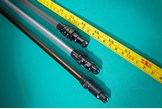

How Long Should Your Driver Shaft Be? All You Need to Know
Are you heading out to the pro shop to look at a new driver? Choosing the right shaft length for your Big Dog or fairway wood is critical to your swing and your experience with the club. You might find it surprising how much adding or taking away just a half-inch from the shaft length can make to your swing and shot.
Shaft length affects your accuracy and your distance off the tee. You’ve probably heard the saying that “golf is a game of inches,” which is true when it comes to your shots and driver shaft length. Any golfer will tell you that there’s nothing more satisfying than the feeling of connecting with the sweet spot and nailing a bomb right off the tee.
With each generation of equipment improving performance, feel, and forgiveness in clubs, you need a custom fit to get the most out of your equipment. You’ll get the consistency you need for your shots with the right shaft length, allowing for long, straight drives off the tee box.
So, what do you need to know about choosing the right shaft length for your new driver? Is your current driver setup to optimize your performance? This post unpacks everything you need to know about driver shaft lengths.
The Role of Driver Shaft Length in Distance and Accuracy
Some golfers are under the mistaken impression that the longer their shaft length, the further the drive. While this statement has some technical truth, it’s not entirely accurate. Opting for the longest shaft length you can find might not be the best strategy when selecting your new driver.
The reality is that longer shafts on drivers make it more challenging to control the club throughout the swing arc . This lack of control reduces distance and weaker accuracy in your drives.
However, several golfing brands claim that increasing your shaft length adds to better distance and accuracy – so, which one is it? Do you go for the longest shaft length available, or is there something to taking a measured approach to fitting your driver?
Sure, a longer shaft might help you get 15-yards extra out of your swing, but does that matter if you’re losing accuracy with your shots? Blasting the ball an extra ten yards deep into the rough or the sand trap isn’t really anything worth writing home about, right?

Driver Distance Sells Clubs
The truth is that advertising drivers that increase distance attract new drivers. If a brand is launching a new model, claiming that it adds to your distance is a great way to attract players desperate to increase their range off the tee box.
A longer shaft on your driver creates more clubhead speed – that’s a fact.
More clubhead speed equals faster ball speeds and better distance off the tee. For this reason, manufacturing brands continue to increase the shaft length on new models.
Somehow, brands find themselves locked in a game of “keeping up with the Jones” with shaft lengths. When one brand releases a new model with a longer shaft length, it’s not long before other brands rush to join the trend.
However, there has to be a point of diminishing returns when it comes to increasing shaft length, right? Or else, we would see brands offering clubs with ridiculous shaft lengths. The reality is that the longer the shaft length, the harder it is for the player to find the sweet spot consistently.
As a result, it’s more common for the player to make off-center contact with the clubhead. An off-center hit reduces distance and limits the accuracy of your shots. So, why would brands sell the longest shafts possible if there’s a chance that they’re actually decreasing your performance off the tee?
Golf brands usually go with the design that tests well. However, testing involves brands using robotic arms to create a consistent swing . A longer shaft could result in an extra five to ten yards on each shot when you have a consistent motorized swing.
However, it doesn’t work like that in real-world applications. You’re not a robot, and the dynamics of your swing could change due to a multitude of reasons. If you accidentally hit the toe of the clubhead, it could reduce your club speed and the ball speed by as much as eight to ten miles an hour. The result? Less distance and accuracy.
So, does that mean that a shorter shaft is the better option for your new driver? Well, not necessarily. While many golfers might find that dropping an inch or half an inch off their shaft length improves their performance, it’s not guaranteed.

What is a Standard Driver Shaft Length?
So, what is the right shaft length for your driver? What do the pros use? If you don’t have the skillset of a pro, what makes you think that a change in your driver shaft length will make any difference to your game?
According to professional fitters, it’s rare for them to build drivers with shaft lengths over 45″.
In fact, most fitters claim that beginner to intermediate golfers will do better with a shorter shaft length than the standard length offered by the manufacturer.
There’s a reason why the average driver shaft length on the PGA Tour is 44.5″, not 45.5″ or longer. Off the rack, the average driver shaft length measures 45.75″ with no customizations. For women, standard shaft lengths are between 43.75″ to 44.75″.
Of course, these are just averages. You might find several variations of up to 1″ in standard shaft lengths between manufacturing brands.
What Length Do I Need for My Driver Shaft?
So, what’s the right length of your driver shaft? Your height and wrist-to-floor measurements are critical to focus on when fitting your driver shaft. Taller players will require longer shafts and vice versa for shorter players.
However, there’s more to it than assessing your height and its impact on shaft length. Your posture also accounts for selecting the right shaft length, and that’s different for everyone. Factoring in your wrist height from the ground when addressing the ball will help you assess the right shaft length for your swing and playing style.
If you want to increase clubhead speed, longer shafts will help. If you’re looking to improve accuracy, it might be better to go with a shorter shaft. It’s challenging to recommend a specific length because every player has a unique style. There are so many factors accounting for the right shaft length for every player.
Your height, strength, and swing speed all factor into assessing the right driver shaft length. So, it’s a good idea to head to the pro shop for a fitting, and you won’t have to worry about the challenges of trying to do it yourself.
Choosing the Right Driver Shaft Length for Your Height
The key to selecting the right shaft length lies in understanding how shaft length and height affect the driver’s performance. As a general rule of thumb, taller golfers need a longer shaft for the driver and vice versa for shorter players.
Regardless of your height, you have the potential to drive the ball a long distance. Many short pros manage to get huge distances off the tee. It all comes down to the right fitment of your driver to your height and body mechanics.
For instance, ’91 Masters champion, Ian Woosnam, measures 5’4″, but his strength and clubhead speed allows him to drive huge distances. It’s about the fitment, not the player’s height or an extra-long shaft.
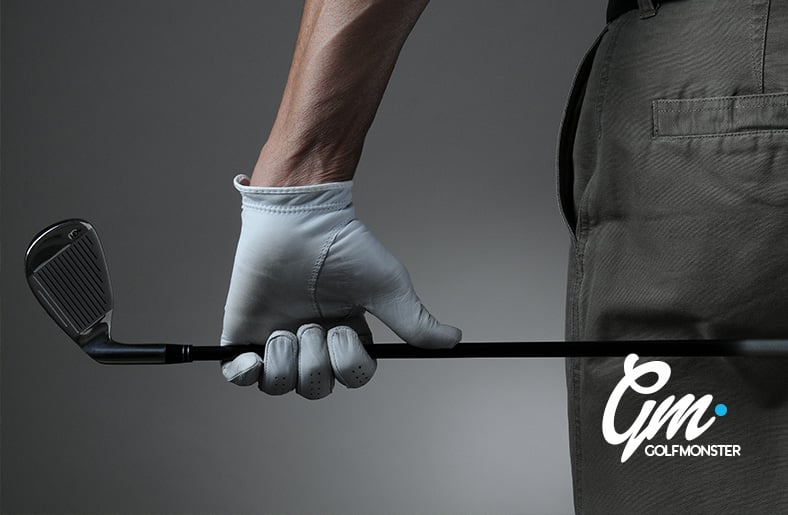
Do I Need to Shorten the Shaft Length of My Driver?
Are you wondering why your drive has gone to the dogs lately? Well, it could be your shaft length in the club. So, what can you do to improve your performance off the tee box? If you find that teeing off with your fairway woods gives you a better shot than the Big Dog, the problem is likely the shaft length on your driver.
The shorter shaft of the fairway wood makes it slightly easier to control the swing and the accuracy of your shot. If you’re struggling to hit the fairway with your driver, it might be worth removing some length from the shaft. The shorter length should make finding the sweet spot on the clubhead easier, increasing the contact and power in your drive while improving your accuracy.
If you’re worried about losing distance by shortening the shaft – don’t. Many golfers find they don’t lose any distance when shortening the shaft. They also improve their accuracy with the club. You might even find that you increase your reach by shortening the shaft, thanks to the enhanced control over the clubhead.
Before you decide to shorten or lengthen your driver shaft, it’s preferable to head to the pro shop and test a range of lengths to see which offers you the best performance off the tee. There are plenty of pro shops that let you try before you buy.
You’ll also find that many stores have attendants that help fit you to the right shaft length. Drivers aren’t cheap, and it’s the most expensive club in your bag. So, ensuring that you have the right setup gets you the most value for your budget and game.
What Is the Correct Method for Measuring Driver Shaft Length?
Measuring yourself for the correct driver shaft length isn’t as challenging as you think. You can do it yourself if you don’t have anyone around you, but it takes a little more time than if you have a helping hand.
Find a ruler or steel-fixed measuring tape with a minimum distance of 4-feet. The solid ruler is the better choice, but a steel measuring tape will do, provided you have something firm to measure against.
Hold your driver with the club head on the ground like you’re teeing up for a shot. Place the ruler or tape flush with the driver shaft, ensuring it’s perpendicular to the ground. Take your measurement and note it before heading off to the pro shop for a custom fitting.

Factoring in Wrist-to-Floor Measurements for Driver Shaft Lengths
The fitter will also account for the wrist-to-floor measurement when fitting you for your clubs. This measurement is the distance from your lower wrist on the grip, to the floor, in a perpendicular line.
They’ll use a chart to determine how this measurement affects driver shaft length according to your unique body type. Some people might have longer arms and shorter legs, or vice versa, so there is no one-size-fits-all, and each case is different.
While some players might think of a personal fitting as a luxury, it’s well worth the few bucks you pay when you consider its value to your game and your golf bag.

In Closing – Top Tips for Driver Fittings
Standard lengths are a myth.
Standard shaft lengths are a myth. The reality is there is no one-size-fits-all shaft length to suit all golfers. Every setup is unique and changes depending on your height, arm length, and other factors like hand-eye coordination and timing. So, it’s critical for you to visit a professional for fitting before you waste your money on purchasing the latest, longest driver.
Test It Before You Commit
Before changing your shaft length, it’s a good idea to visit a professional fitter. A fitter can help you assess the right shaft length to complement your swing. Fitters use digital tools like launch monitors, such as GC2, Trackman, or Flightscope, to determine the changes in your swing relating to shorting or lengthening the driver shaft.
Consider Before Your Cut
If you feel that your shaft is too long, take a minute to assess the situation before chopping off the length. Changing the shaft length alters your swing weight, resulting in a totally different feel to the driver. Shortening the shaft length by an inch is enough to require adjusting the clubhead to maintain the same club speed and ball speed. It’s critical to use a professional fitter when removing length from your clubs.

Casey hails from Florida & is our resident product tester and head of reviews here at GolfMonster. Casey is a scratch golfer with 20+ years of golf knowledge behind him. You will him out on the courses of Sarasota.
Related Posts
A to z of golf terms: a complete glossary of golf jargon, how many dimples are on a golf ball, best center shafted putter: our top choices & buyer’s guide, cobra radspeed king driver review: worth buying let’s find out, leave a reply cancel reply.
Save my name, email, and website in this browser for the next time I comment.
Type above and press Enter to search. Press Esc to cancel.
Game Changers
How driving distance has changed over the past 40 years on the pga tour.
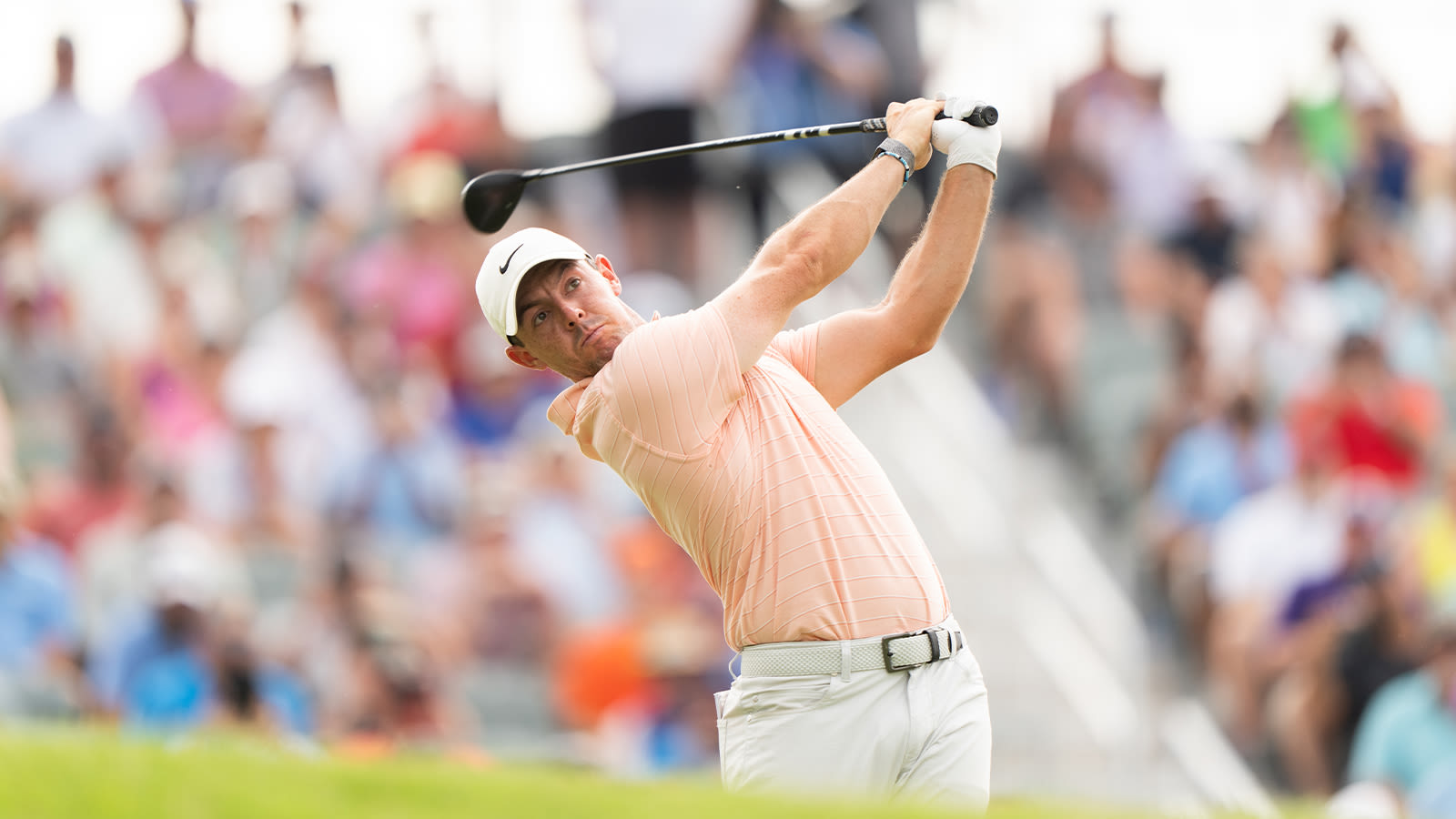
Rory McIlroy of Northern Ireland hits his shot from the tenth tee during the second round of the 2022 PGA Championship at the Southern Hills on May 20, 2022 in Tulsa, Oklahoma. (Photo by Darren Carroll/PGA of America)

We Can Learn from Rory's Admission; Make Sure The Changes You’re Making Fit Your Golf Game

Hit it Longer off the Tee with Joanna Coe

Adding Distance Off the Tee Like Cameron Champ Will Help Your Golf Game
Year - average distance (yards) | leader - leader's average.
- 2023 - 297.2 | Leader: Rory McIlroy - 326.6
- 2022 - 299.8 | Leader: Cameron Champ - 321.4
- 2021 - 295.3 | Leader: Bryson DeChambeau - 320.8
- 2020 - 296.4 | Leader: Bryson DeChambeau - 322.1
- 2019 - 293.9 | Leader: Cameron Champ - 317.9
- 2018 - 295.29 | Leader: Trey Mullinax - 318
- 2017 - 292.79 | Leader: Rory McIlroy - 316.7
- 2016 - 291.06 | Leader: J.B. Holmes - 314.5
- 2015 - 290.21 | Leader: Dustin Johnson - 317.7
- 2014 - 289.85 | Leader: Bubba Watson - 314.3
- 2013 - 288.00 | Leader: Luke List - 306.3
- 2012 - 290.07 | Leader: Bubba Watson - 315.5
- 2011- 291.14 | Leader: J.B. Holmes - 318.4
- 2010 - 287.49 | Leader: Robert Garrigus - 315.5
- 2009 - 288.07 | Leader: Robert Garrigus - 312
- 2008 - 287.74 | Leader: Bubba Watson - 315.1
- 2007 - 289.08 | Leader: Bubba Watson - 315.2
- 2006 - 289.35 | Leader: Bubba Watson - 319.6
- 2005 - 288.88 | Leader: Scott Hend- 318.9
- 2004 - 287.32 | Leader: Hank Kuehne - 314.4
- 2003 - 286.30 | Leader: Hank Kuehne - 321.4
- 2002 - 279.84 | Leader: John Daly - 306.8
- 2001 - 279.35 | Leader: John Daly - 306.7
- 2000 - 273.18| Leader: John Daly - 301.4
- 1999 - 272.45 | Leader: John Daly - 305.6
- 1998 - 270.63 | Leader: John Daly - 299.4
- 1997 - 267.67 | Leader: John Daly - 302
- 1996 - 266.49 | Leader: John Daly - 288.8
- 1995 - 263.55 | Leader: John Daly - 289
- 1994 - 261.84 | Leader: Davis Love III - 283.8
- 1993 - 260.36 | Leader: John Daly - 288.9
- 1992 - 260.52 | Leader: John Daly - 283.4
- 1991 - 261.44 | Leader: John Daly - 288.9
- 1990 - 262.75 | Leader: Tom Purtzer - 279.6
- 1989 - 261.81 | Leader: Ed Humenik - 280.9
- 1988 - 263.50 | Leader: Steve Thomas - 284.6
- 1987 - 262.50 | Leader: John McComish - 283.9
- 1986 - 261.58 | Leader: Davis Love III - 285.7
- 1985 - 260.18 | Leader: Andy Bean - 278.2
- 1984 - 259.61 | Leader: Bill Glasson - 276.5
- 1983 - 258.65 | Leader: John McComish - 277.4
- 1982 - 256.89 | Leader: Bill Calfee - 275.3
- 1981 - 259.66 | Leader: Dan Pohl - 280.1
- 1980 - 256.89 | Leader: Dan Pohl - 274.3
PGA of America
The PGA of America is one of the world's largest sports organizations, composed of PGA of America Golf Professionals who work daily to grow interest and participation in the game of golf.

- Updated: December 16, 2022
Driver Shaft Length by Height
by Independent Golf Reviews
The average driver shaft length is about 45 1/2 inches because this is the standard driver shaft length you’ll find on clubs at your local golf store, so that is the length many recreational golfers use.
Of course, the shaft length can be shorter or longer, depending on player height and preferences.

Driver shaft Length by Height
There is no “one-size-fits-all” driver shaft. The right shaft length is different for everyone. The standard recommendation of how long a player’s driver shaft should be is based on the player’s height. More specifically, a wrist-to-floor measurement of the player can be used. Generally, the taller the player is, the longer the recommended shaft should be.
Height – Driver Length Fitting Chart
5’0″ to 5’2″ – 41.5 inches
5’2″ to 5’4″ – 42 inches
5’4″ to 5’6″ – 43 inches
5’6″ to 5’8″ – 43.5 inches
5’8″ to 5’10” – 44 inches
5’10” to 6’0″ – 44.5 inches
6’0″ to 6’2″ – 45 inches
6’2″ to 6’4″ – 45.5 inches
Over 6’4″ to 6’6″ – 46 inches
For example, the average shaft length you’ll find on drivers at your local golf shop (~45 1/2 inches) is a setup recommended for a player between 6’2″ and 6’4″. Certainly, only some people getting their new driver off the store rack and putting it right into their golf bag fall into that height range.
In fact, the average height of an American male is 5’9″, which equates to a recommended driver shaft length of 44 inches. That extra length will likely cause players to struggle to control their ball despite owning the latest and greatest driver technology.
According to our driver shaft length chart, a golfer that stands between 5’0″ and 5’2″ is recommended to use a driver shaft length of 41 1/2 inches. A golfer that is between 5’4″ and 5’6″ is recommended to use one that is 43 inches long. From there, every two inches taller a player is, the recommended driver shaft length increases by half an inch, with the last recommendation being 46 inches for players between 6’4″ and 6’6″. Wrist to floor measurements should also be taken because a person’s wingspan might cause them to fall into a different category than the one for their height.
Hitting the fairway in PGA Tour events is often more important than distance. The average driver length on the PGA Tour is 44 1/2 inches – a full inch shorter than the average stock driver. Many professionals prefer a shorter driver shaft, as it can help give them better control and accuracy. Of course, shaft lengths vary from player to player and often from course to course, as players look to maximize their performance each week by catering their game to each venue.
Pros and Cons of a Longer/Shorter Driver
The most basic battle a golfer faces is the balance between distance and accuracy. Hitting the ball farther is a goal for nearly all golfers, no matter the level. Distance is cool, while accuracy can become an afterthought. This is one of the reasons stores default to a shaft that is too long for the average player. A person using a shorter shaft will love that the ball is going farther when trying it out at the store.
The length of the driver shaft has an extreme impact on the distance, as a longer driver shaft helps to increase a player’s clubhead speed, leading to a faster ball speed. If you are a player that struggles to generate swing speed, a longer driver shaft may help gain some much-needed yardage off the tee. All that extra speed will help improve overall distance.
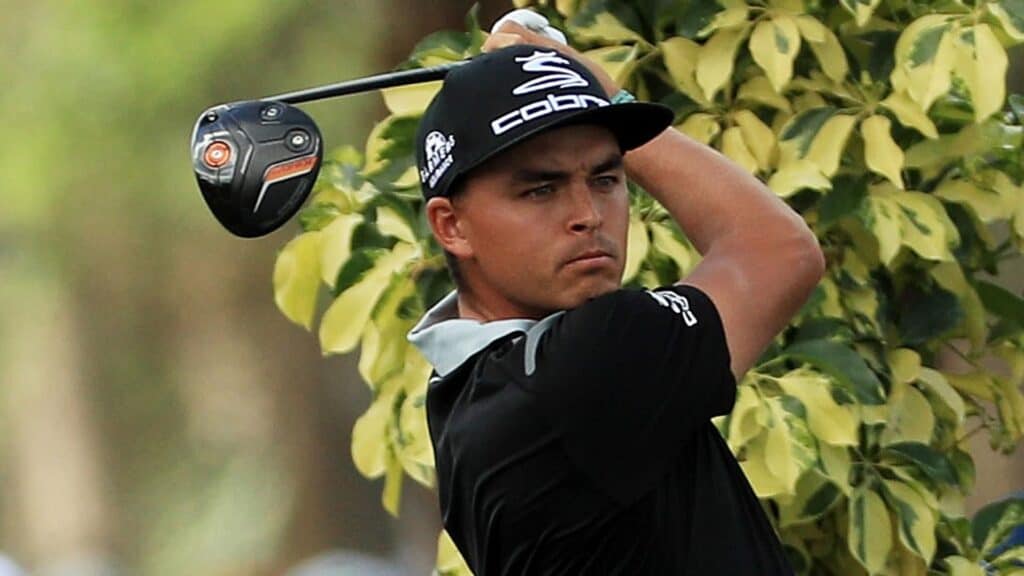
The extra length can also make the club more difficult to control, losing accuracy. If you’re a player that likes or needs to work the ball with a particular trajectory, a longer driver length could make that more difficult or less predictable.
Restrictions of Shaft Length in Professional Golf
In January 2022, golf’s governing bodies created a rule limiting how long a driver shaft can be, capping the length at 46 inches for high-level competition. Enforcing the rule would fall to the tournament itself, but this did cause some uproar amongst some of the game’s most prominent players.
Phil Mickelson, well known for his desire to chase distance, was greatly displeased by the rule, especially after he used a 47 1/2-inch driver to win the 2021 PGA Championship.
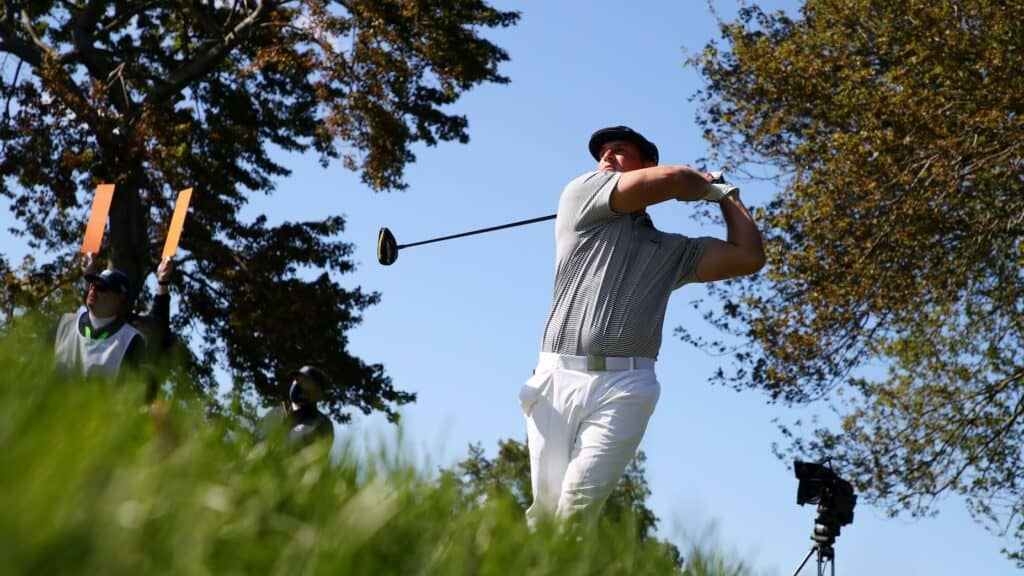
Bryson DeChambeau, who was among the longest drivers of the ball on the PGA Tour before departing for LIV Golf, leaves no stone unturned when seeking a distance advantage. He had been experimenting with a 48-inch driver before the rule was adopted.
The rule won’t affect the vast majority of golfers, though. According to the Rules of Golf, a driver shaft length up to 48 inches is still legal, so feel free to use the longer club when playing with friends.
What is Best For You?
Every player is different, both in physical traits and performance goals. In order to find the ideal shaft length, schedule a professional club fitting. They will get accurate height and wrist-to-floor measurements to get you started in the right direction and get the correct club length.
From there, a fitter can help determine exactly what kind of shaft will give you the best results. Driver length is important, as are shaft flex, shaft weight, and kick point. Whether you fit into a standard length or a shorter one, a fitter can match you to the specifications of a shaft that will help you hit the ball your best and be more consistent.

About The Author
Writers of Independent Golf Reviews Independent Golf Reviews has tested and reviewed 1000+ golf products over the past 10 years. We use our experience and expertise to give golfers an unbiased insight on the market. Read more…
You are now an official member of IGR. Keep an eye out for the perks.
No spam, ever. 🔒

About Us Submit Your Product Contact
Full Disclosure Privacy Policy Terms and Conditions
© 2024 Independent Golf Reviews
Driver Length | Standard Shaft Length and If It's Right For You
Last Updated on July 24, 2021
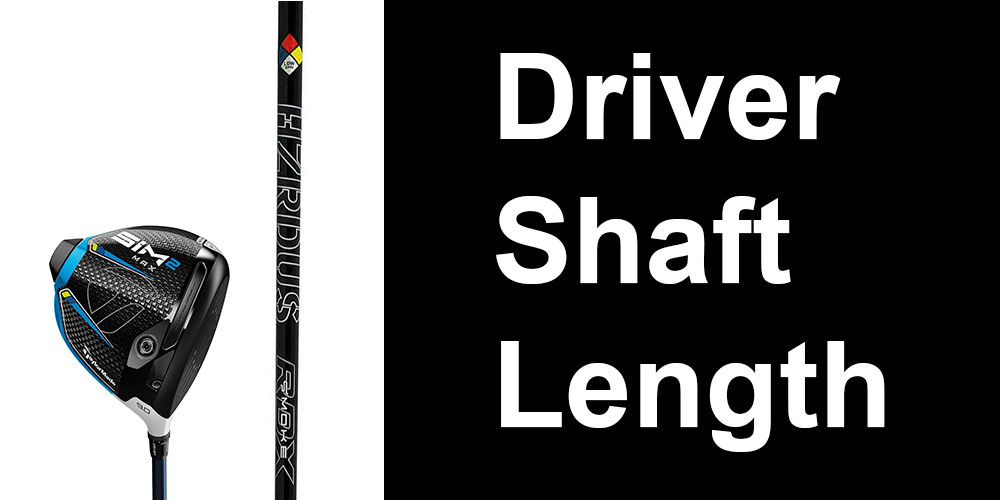
When hitting driver, we want to hit the ball as far as possible while keeping it in play.
Longer shafts typically lead to higher swing speeds and further drives, but at some point, an increase in distance no longer makes up for the loss in accuracy and consistency.
In this guide, we'll answer all the questions you have about driver lengths, including:
- What's the standard driver length?
- What length driver do the best club fitters recommend for most golfers?
- How long are PGA Professionals' drivers?
- How long should your driver be?
- Don't cut down a driver without making weight adjustments
- Making a case for a Driver and "2-Wood" in your bag
What's the Standard Driver Length
The standard driver length for men's clubs is 45.5" to 45.75" inches long. Because women tend to be shorter than men, the standard women's driver length is usually closer to 44".
The 2020 TaylorMade SIM2 , Callaway EPIC , PING G425, and Titleist TSi1 come configured at 45.75" off the rack.

Meanwhile, TaylorMade's SIM2 women's models are 43.75", and Callaway's women's EPIC drivers are 44.5".
As the size of driver's heads have increased over the years, so too have the length of their shafts. Thirty or more years ago, the standard shaft length for a driver was closer to what we see in 3-woods today, around 43 inches.
While the argument can be made that golf club manufacturers have pushed driver lengths too far so that they can advertise more distance, remember that clubs have gotten a lot more forgiving over the years.
What Length Driver Do the Best Club Fitters Recommend for Most Golfers?
In our experience getting fitted and what we've gathered talking to and researching what club fitters have to say about driver length, most of the best club fitters recommend drivers very close to the standard length for most golfers.
For example, the video below shows Ian Fraser of TXG Tour Experience Golf, one of the most well-respected club fitters in the industry, discussing how he fits most golfers at 45".
The average golfer will perform best with a driver at or near standard length. While exceptions are fairly rare, golfers who are significantly shorter or taller than average are most likely to benefit from a non-standard length shaft.
During a fitting, if all else has failed while attempting to build a driver a player can hit consistently, a fitter may then look at shortening the length of the club.
Golfers who are extremely consistent and accurate with standard length drivers may want to consider increasing their driver's length in search of more distance.
Keep in mind, golf clubs are limited to a max length of 48" under the rules of golf.
How Long Are PGA Tour Professionals' Drivers?
PGA Tour Professionals tend to play drivers between 44-46" in length. The vast majority of pros are in the 44.5" to 45.75" range from what we've been able to gather.
There are, of course, exceptions in both directions.
Rickie Fowler famously decided to go with just a 43.5" driver in 2017, a year in which he won the Honda Classic.
On the opposite end of the spectrum, Phil Mickelson had a 5.5° 47.9" driver in his bag alongside a 10.5° "2-wood" when he won the PGA Championship. Bomber Bryson Dechambeau has had all of his success using a driver around standard length, but he's been talking a lot about experimenting with a 48" driver.
How Long Should Your Driver Be?
As we mentioned at the start of this article, the best driver for you has the optimal balance of distance and accuracy.
It's not useful hitting 300+ yard bombs if every shot is out of bounds. You also don't want a driver that hits every fairway but leaves you a 3-wood approach into every par -4 hole.
The best way to find the correct driver is to get fitted by a knowledgeable club fitter. A good club fitter will not only let you try out all the different driver heads and shafts they have available, but also let you try varying length shafts.
If you're interested in trying a different length driver shaft, we'd recommend bringing this up with your fitter at the start of your fitting session. It may be a good idea to start by trying standard length configurations, as whatever problems you have with your current driver may have nothing to do with shaft length.
As we'll explain in further detail below, when the length of a shaft is changed, the club's swing weight will quickly change. A club fitter not accounting for this is a huge red flag.
Don't Cut Down a Driver Without Making Weight Adjustments.
Many golfers wanting to try a shorter driver think they can simply have their shaft cut down, but this is not the case if you want it to feel anything like a normal driver.
When you add or remove inches from a driver shaft without making any other adjustments to balance the weight of the club, the swing weight will change.
It doesn't take much for a driver to feel drastically different. 1/2 inch adjustments to a club's shaft length will move the swing weight by about 3 points. Cut a couple of inches off your men's driver shaft without adding weight to the head and it could easily feel like swinging a ladies iron. Trust us; this sounds better than in practice, especially as a golfer accustomed to heavier swing weights.
Again, a good club fitter should adjust the weight in the head, shaft, and/or grip for an optimal swing weight if you're straying too far from a standard configuration.
Making a Case for a Driver and "2-Wood" In Your Bag
It's starting to become popular having both a Driver and a "2-wood" in the bag.
We're huge fans of this trend, especially for golfers who don't struggle with distance off the tee.
If you decide to go this route, we love pushing the limits of your driver. For example, you may want to try extreme shaft lengths (standard length or longer), lofts (fast swinging players with a good driver swing can experiment with as little as 6°), and tee height (tee the ball up higher and try to swing up on the ball more).
With this bag setup, we're happy to lose a bit of driver accuracy in favor of distance. With another good par-4 and par-5 tee club in the bag, you only need to use this club when there's minimal danger if you hit offline.
The "2-wood" in this setup will be more of a "fairway finder." The goal is to minimize distance lost compared to your standard driver configuration while significantly tightening the dispersion of your shots. This club will generally have a shorter shaft and more loft .
There are a lot of options for the "2-wood" in this setup.
- Another Driver - If you can devote two clubs to being only used as tee clubs, you could use a higher lofted and/or shorter shafted regular driver head as a "2-wood".
- Mini-Drivers - TaylorMade's " Original One Mini Driver " has a standard length of 43.75", and it has a smaller head (275CC) at lofts of 11.5° and 13.5°. The loft can be adjusted by 2°, allowing it to go as low as 9.5°. Compared to a standard driver head, many golfers will find the TaylorMade Mini to be playable off the ground (depending on the loft).

- 3-Wood W/ Loft Turned Down - The final option is a low lofted 3-wood. Many manufacturers make 3-woods with lofts as low as 13° that can be adjusted by an additional 2° lower.
Final Thoughts
We've covered a lot in this guide, but ultimately it's on you to test out different clubs and find out what's right for you.
While a shorter or longer than standard driver is likely worth giving a shot, we'd first recommend trying different options close to standard length when getting fitted for a driver.
- Golf Terms Guide
- Golf Scoring Terms
- Best Golf Rangefinder
- What to Wear Golfing
- Terms of Service
- Privacy Policy
- Affiliate Disclosure

Driver Shaft Length Guide By Height (Read This Chart!)
Jake was a competitive golfer for over a decade dating back to the days of being the Captain of his high school golf team. He has played more than 200 courses across 32 different states in the US. Now semi-retired, Jake continues to golf 3-4 days a week with a current 2 handicap, gives golf lessons to his friends and family, and provides a wealth of knowledge to Golf Circuit from his competitive playing days. Jake combines practical expertise with technical knowledge to create golfing strategies and training techniques for both beginners and scratch golfers.
This is our driver shaft length guide. Read below to get to the driver shaft length chart.
Hitting a golf ball long is not the same as getting it to go straight . If you are a seasoned golfer, you already know this.
Usually, when players are on tour, they like to use a shaft with an average length of 44.5 inches. And what you find in shops are drivers with about 45.5 inches. What’s the difference? We’ll get to that in a moment.
The length that will give you your best speed depends on the player. And golf club manufacturers offer custom fittings precisely for this reason.
When it comes to shafts and drivers, golfers are perpetually looking at length because that is the thing that helps the golf ball go the distance, quite literally.
Most experienced players like their driver shafts to be about 1-3 inches longer compared to what is recommended as a standard.
But the length of the driver shaft is not the only factor. Here’s your driver shaft length guide if you are trying to hit the golf ball further than the competition.
Driver Shaft Length Chart By Height
I recommend these driver shafts.
This driver shaft length chart is only a suggestion. It isn’t an exact science.
You can more or less get the same result by choking up on the golf club if you happen to have a driver that is too long!
The Importance of Driver Shaft Length

Players and even manufacturers focus on the length purely because it gives you a mathematical edge.
Many manufacturers are changing the length of the driver shaft so that the golfers can hit the ball at least an extra 10 yards. See our list of the best driver shafts to learn more.
But the first thing to keep in mind is that a long shaft, while enabling distance, makes it tougher for the player to keep control of the club itself.
And this, in turn, makes it tricky to achieve the perfect shot. You see, it is not just about distance but also accuracy. And you can’t afford to forsake one for the other.
By making the driver shaft long, you might occasionally get the outcome you want in terms of distance and accuracy.
But you will also be bringing along the risk of hitting the ball into the woods, water, or, worst of all, out of bounds.
The driver shaft length should be such that you can achieve both distance and accuracy together.
To not compromise on accuracy for distance, you need to be skillful about picking the right length. And there is no formula that we can hand over.
Golfers also don’t like having the shaft too short because they feel accuracy is a matter of control.
Still, distance is something the tech should enable for them.
And hitting long shots and lower scores is obviously more advantageous.
So, if the distance is your only concern, then moving the shaft length up is not a bad idea.
Here’s how you can make that an advantage without losing accuracy.
If you aim for the ball to go 250 yards, you need a driver shaft of 43 inches and must hit it on its screws.
If you increase the length by just half an inch, you can push the distance to 262 yards. And if you go for 44 inches, the ball can reach 270 yards.
If the ball starts resting near the fairway, getting an extra 20 yards is a big advantage. So, instead of a 5-iron (equal to 160 yards), you can hit a 7-iron (equal to 140 yards) to the green.
And if you want to see what happens, if you extend the length a little more and go for 44.5 inches, the ball will reach 275 yards.
It is another half an inch, and at the 45-inch mark, you will notice that it can go as far as 280- 300 yards .
If you want the shot to have the accuracy, too, you want to make sure that the ball is in the open path or fairway as often as you can. And as tricky as it is, this can be done with longer shafts.
You just need to make sure you have practice and control beforehand. So, if you are hitting professionally, you want to do some trial and error with an expert and see the right length for your style’s game.
Now to the final step. The perfect blend of accuracy and distance requires you to pair the length and flex of the club.
And there are a few things that both male and female golfers do when picking the right shaft. Let’s take a look.
Drivers for Men

The standard driver shaft length for men is 43.5 inches when the shaft is steel. If it is made of graphite, 44 inches is the norm. But in recent times, 45 inches has become the standard.
So, now you will see players carry around driver shafts anywhere from 45-48 inches long.
According to the Rules of Golf, they can’t go any higher than that because it is the maximum permitted length as dictated by the United States Golf Association (USGA).
Drivers for Women
If you are looking at female players, the standard length of drivers is one inch less than what is prescribed for men.
That came up to 43 inches for women’s drivers in the past. All that changed in 2012, and ever since, 44 inches has been the standard for women golfers.
But if you are watching a game with some of the smaller players, you might see them use drivers that are 48 inches.
If they can achieve that, you are probably looking at someone special. This is allowed, but as you now know, it takes a lot of skill to control those clubs.
How Long Is Too Long? Is That Legal?

Companies have been making drivers longer than 48 inches because they have been trying to cater to the needs of those who have taken up the sport for recreational purposes where there aren’t many rules.
This is why tee shots can go as far as 400 yards because they are being hit with drivers that are about 72 inches.
Drivers that are longer than 65 inches are often used to hit trick shots. But since these drivers are way above the permitted limit of 48 inches, you cannot use them in tournaments under the purview of the USGA.
Strictly in terms of legality, there was a time when you could have used drivers that were up to 60 inches long if you were participating in long-drive championships.
But these are for clubs that have wider swing bases, and even they have limited the length to 48 inches.
Now, the focus is less on the length of the shaft and more on the composition of the driver’s head.
More and more players are also trying to match the ball type to the driver to get the shot right instead of just increasing the length of the shaft.
What about Cutting It Down?
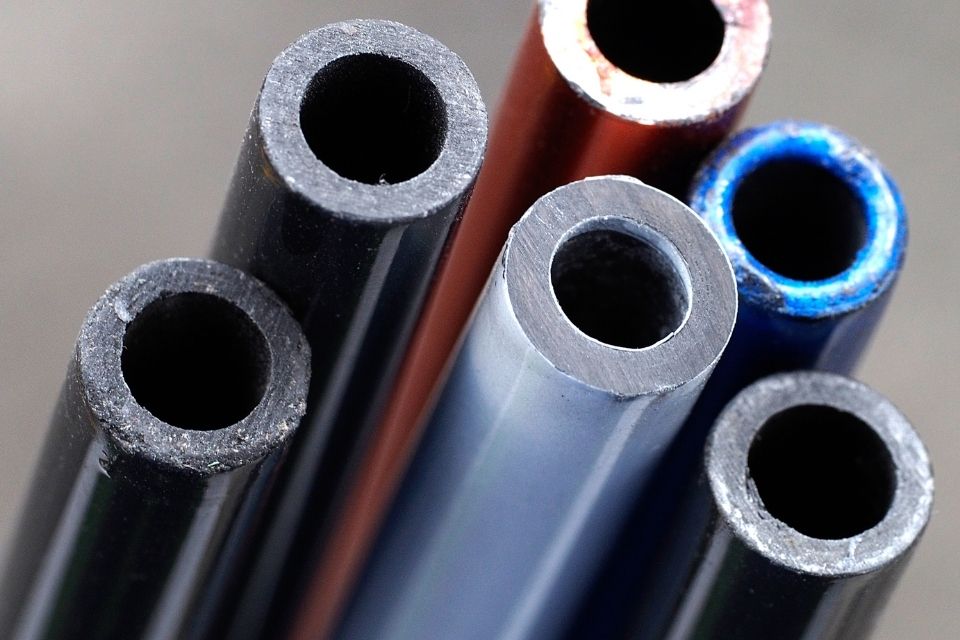
If you consider cutting the length down, that’s not a one-step decision either. Here’s what you need to consider before you do the trim.
Suppose you don’t get used to it before the competition.
When you are ready to address the golf ball, the look and feel of your club will be different since you will be a bit closer to the target. In that case, you will be uncomfortable and lack confidence while hitting the ball.
Once you make the switch, you should practice a little before competing with this club, especially if you trim it by more than one inch.
Then you must think about the weight of the golf club. When you trim your club, its weight also changes, and as you would suspect, that impacts your swing.
Once again, if you don’t have enough practice, you won’t be able to balance the weight and your strike, which means you won’t get the outcome you desire.
If you don’t want the weight to change, you can offset the lost weight with a relatively heavier shaft or add lead tape to the clubhead.
And finally, you must manage the stiffness of the shaft , which is the result when you trim the driver.
It is recommended to get a shaft of your desired length made in the factory instead of outsourcing it to a fitter you know.
This will reduce the flex, increasing your swing speed to get the same result as before the trim.
The Bottom Line
What we can easily assume is that typically, players who have rhythm and smoothness in their swing are better equipped to control a driver that has more length than the standard recommendation.
But some players have trouble with accuracy when using a longer shaft, especially if their focus is on presentation and not the score.
So, you must pick a shaft that works well with the speed of your swing and then match it with the length.
This only reinforces what we already know. There are no shortcuts to getting the perfect shot. Everyone needs to do their homework. Simple as that.
Similar Posts

Putter Length By Height (Read this Chart)
Are you an intermediate golfer looking to elevate your golf game? Then this guide is for you! Once…

50 Vs. 52 Degree Wedge: Which Gap Wedge Is Best?
The game has changed regarding wedges, and many golfers, pro and amateur alike, may find themselves with three…


Callaway Strata Set Review: 10 Things To Love
This is our in-depth Callaway Strata Set Review. Are you looking to take up golf or lift your…

How To Select Golf Club Shaft Flex?
It’s easy to blame a poor golf game on your equipment when in reality it comes down to…

What Wedges Should a Beginner Carry? (COMPLETE Guide!)
Trying to figure out what wedges should a beginner carry? Here is our guide! (Stick around till the…

Pinemeadow PGX Putter Review: Great Value Under $50
Golf putters are hitting the market at more than $300 for a release price. Things have changed. Putters…
My question is if I remove my 45 inch stiff driver shaft and put a (same shaft) 48 inch does it change the flex (does now become a r or a shaft
By increasing the shaft length, you do change the flex of the club. A lot of times, you will change the flex by an unpredictable amount. By increasing the length of the shaft, you actually lower the bend point (or kick) of the shaft.
Players with a high swing speed will be able to notice this more than others, however even a player with a lower swing speed may feel they are not as accurate as before.
I hope this helps!
Thanks so much for your article!! I’m 70 with a short 100-150, but always straight shot. It’s actually boring and frustrating 😉 as I just can’t get the ball to go any farther. Am anxious to juggle the shaft length so it does not feel as unwieldy while still maintaining the straight flight.
Best Regards
I would say try out a longer shaft and see how it feels! It may be weird at first but you might be surprised by the result 🙂
Building a 7° driver 46 in I am 6ft hit my drives 200 220 straight light senior shaft
Leave a Reply Cancel reply
Your email address will not be published. Required fields are marked *
Save my name, email, and website in this browser for the next time I comment.
- Skip to primary navigation
- Skip to main content
- Skip to primary sidebar
- Skip to footer
Golf Cart Report
#1 Rated Golf Cart Consumer Guide
What Is The Average Driver Length On PGA Tour? (Everything To Know)
May 10, 2021 by Brittany Olizarowicz Leave a Comment
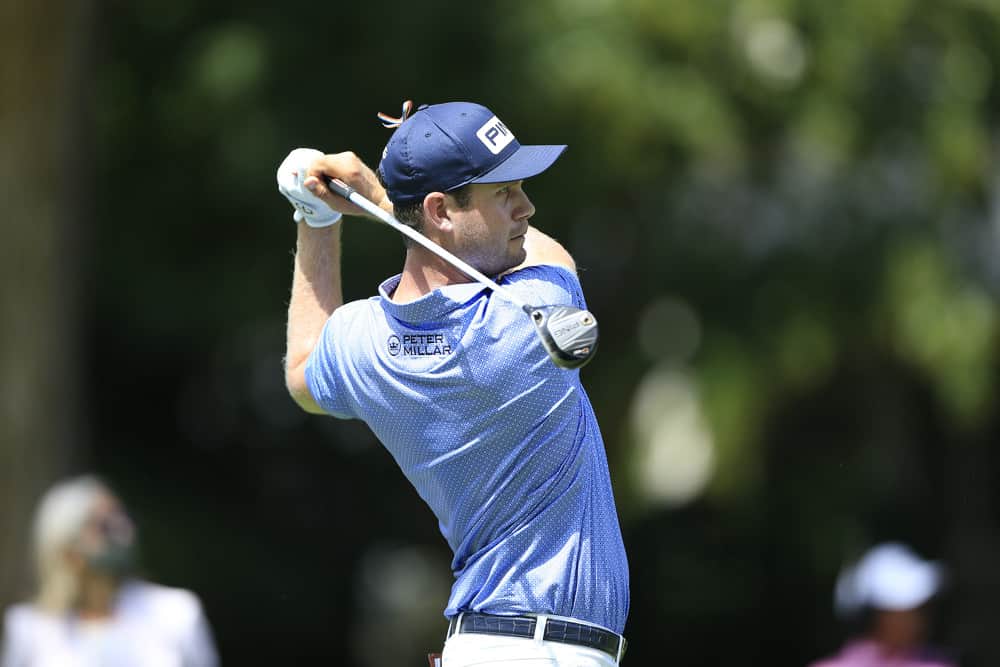
(Photo by David J. Griffin/Icon Sportswire)
Golfers on the PGA Tour are known for hitting drives that all amateurs are envious of.
With the length these players can get, golf just seems a bit easier.
Although there are still plenty of putts to make, hitting the ball that much closer to the hole is going to naturally make lower scores easier to obtain.
One strategy that many amateur players have is that they will try and use the same or similar golf equipment as the professionals.
By using similar golf equipment, golfers will be able to try and essentially copy what the professionals do.
Average Driver Length On The PGA Tour
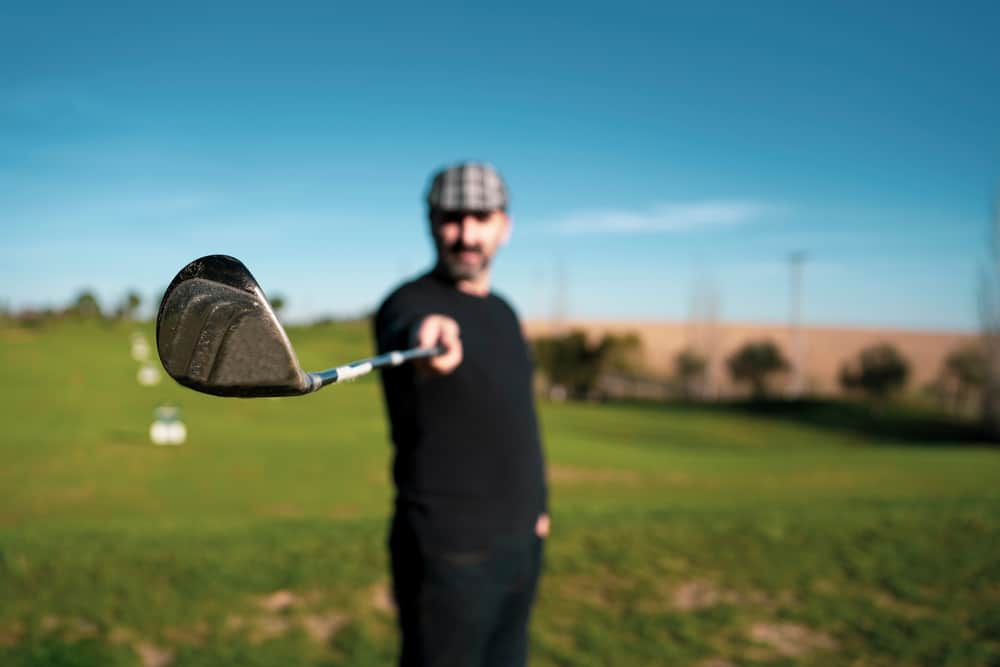
The average driver length on the PGA Tour is 45 inches.
Golfers who purchase a stock driver off the shelf of their local golf warehouse are also going to find that the club is 45 inches long.
This is the standard length for a driver, and most professionals find that it works well for them.
We all know that the science of golf tells us that the longer the club, the further you will be able to hit the ball.
However, for the professionals and amateurs alike, there is a fine line between a club being long and a club being uncontrollable.
The longer a golf club is, the further you can technically hit it.
However, as the length of the golf club increases, a golfer’s ability to hit the ball straight decreases.
The relationship is very clear, and as golfers start to increase their club length, they have a harder time controlling everything.
Have you ever wondered why it is so much easier to hit your pitching wedge straight than to hit your driver straight?
The length of the club has a great deal to do with it.
Even though professional golfers have swing speeds and strengths that we are not used to seeing at our local golf courses, 45 inches is about where they draw the line.
Ensuring that the accuracy is in place is really where the players make their money.
Although they want to be able to hit the ball 330 yards, it is more important to hit the ball straight.
Golfers who can keep their ball in the fairway have a better chance of hitting their next shot closer to the pin.
Let’s answer a few other questions that come up about the lengths of clubs and what the pros are keeping in their bags.
Should I Play With A 45-Inch Driver?

As golfers get more and more involved with custom fitting, we often see questions start to come up about the proper length of irons.
People tend to put a lot of weight into their irons being properly fit for their game.
Next, golfers are always concerned about the putter length and whether or not it makes sense for their game.
One of the last things a golfer tends to worry about is driver length.
For the most part, golfers will pick a driver off the shelf and put it in their bag.
However, the length of the player in comparison to the length of the driver is a consideration that should be made.
Golfers who can hit the ball a long way with a stock driver should probably leave things alone.
However, if you have been struggling with your driver recently, you may want to make sure it is properly fitted to your game.
If you were to go in for a complete golf club fitting, you would find that the driver length is a very important factor to be fitted for.
The proper driver length can help ensure that you can hit the ball straight and consistently.
If you are shorter than 5’11”, chances are you may want to look into a fitting for your driver.
Most of the clubs that are sold are going to be right around 45 inches in length.
This is the perfect length for a golfer who is between 5’9” and 6’0”.
However, if you fall outside this range, you may want to look into a custom fitted driver.
Truthfully, players who are a little shorter than this can typically learn to turn the driver over and still hit a great shot.
In addition, golfers who are a little taller typically don’t want to add too much length to the driver.
If you add too much length, you will lose some control, and that likely won’t be worth it.
Even though the recommended range is really just a few inches, it is actually quite a bit wider than this.
Still, if you feel as though you can’t hit your driver straight or it won’t release properly, it could be because of the length of your club.
The bottom line is that most golfers are going to be just fine using the 45-inch club.
If you are currently playing great golf with your driver, you do not want to mess with it.
Let this be as it could very likely cause you more problems if you start messing around with something that doesn’t need to be fixed.
When you are having issues with your clubs, you should start researching what it takes to get your game to the next level.
Chances are club fitting is going to play a role in it.
Can I Cut My Driver Down Or Extend It?
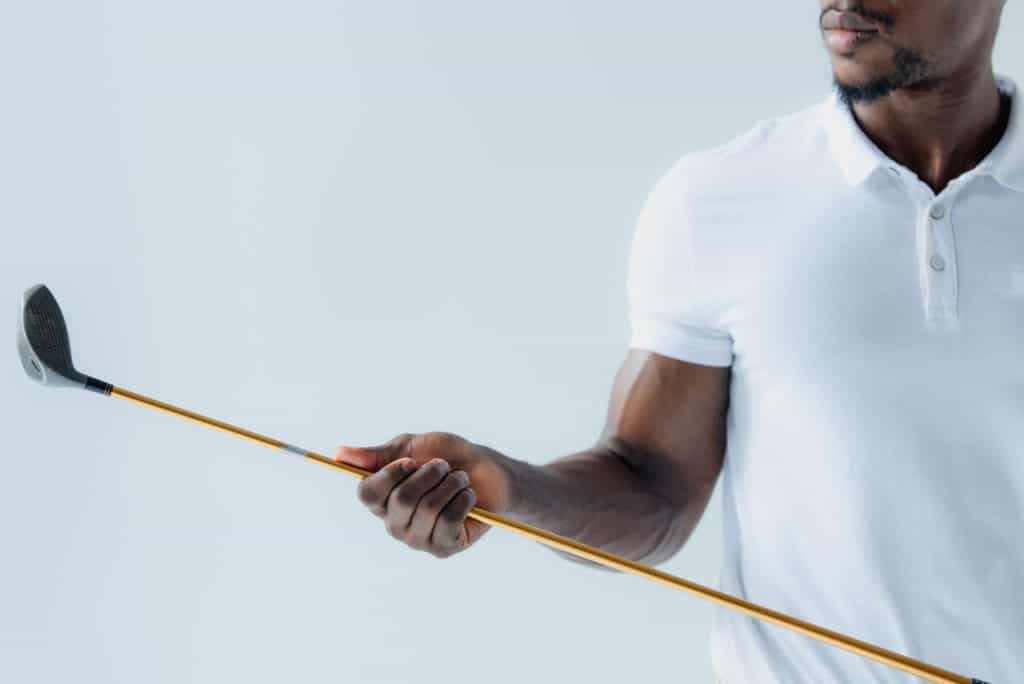
If you have found that you need to change the length of the driver that you are currently playing with, you may be tempted to do it yourself.
If you talk to a local club fitter, they will likely tell you that this process may be a bit more complicated than you think.
It’s important to remember that golf club fitting can get very technical and detailed .
Certainly, not many average golfers are capable of understanding the balancing act involved with cutting down and extending golf clubs.
If you have no experience working on golf clubs, it likely makes sense to have a professional look at the club and fix it up for you.
Having a driver cut down or extended should not be that expensive.
The real expense comes if you need to replace the shaft in the driver.
If you don’t handle the cutting down or extending process correctly, you could end up needing to replace the shaft anyway.
Drivers are made with graphite shafts that are quite expensive and fragile.
When you need to change the length of the shaft, you must remove the grip, measure the shaft, cut it down, and then replace the grip.
The problem is that if you don’t have the right tools, you can split the graphite when you cut it.
Not to mention the club needs to be in an adequately protected vise because, otherwise, the club can slip and move around and cause more issues.
In addition, it can be a good idea to get a second opinion about the length to which you plan on cutting your driver.
If you choose something a bit too long or too short, you could end up making the game of golf harder on yourself.
Should I Shorten The Length Of My Driver?

Have you seen the increase in popularity of the golf clubs that are all one length?
The one-length golf clubs tend to get people more excited about the game because they are so much more consistent.
When you use a one-length golf club, all of the irons are the same length as the seven iron.
This means that every time you set up to hit your shot, you will be set up almost precisely the same way.
With all of the variables involved in golf, it certainly helps to take something like ball position and width of stance out of the equation.
The most exciting thing about the one-length golf clubs is that players are not losing distance with the longer irons.
Even though the club is shorter than standard, the distance is still just about the same.
You will find that this has brought up the idea and concept of players shortening their drivers.
The idea would be to better control the shot because the length of the driver is much easier to manage.
In theory, this would make quite a bit of sense.
However, in reality, the construction of the driver and the way it works really make it so that you can’t get the distance you want with a shorter driver.
Of course, as players age or if their swing speeds are very slow, the shorter driver can be a solution.
However, for the most part, players find that shortening the driver does not help the results of the golf drive, and it is better to learn how to release the club properly.
Tips For Hitting A Longer Driver

If your club is a bit too long for you, there are a few things you can do to hit the ball just a bit straighter.
Here are our favorite ways to help get everything you can out of the driver.
1. Work On Strength
The stronger you get, the easier it is to hit the ball straight and far.
If you can work on increasing your strength, you should not have too much trouble getting the longer golf driver to travel further.
If you take examples from Bryson DeChambeau this year, we all saw that strength in golf does make a difference.
2. Pause At The Top
Sometimes with a longer golf club in your hand, it makes sense to feel a more prolonged pause at the top of the swing.
The pause allows the entire swing to start to fall into place without you having to do all that much.
The pause allows players to have a better tempo and to get the swing on track without feeling as though they are trying to control such a long club.
The pause at the top is a simple method that you could implement today.
Practice it on the range a few times and then head out on the course.
3. Don’t Stop At The Ball
When you swing a driver, you must get through the ball.
When you hit an iron shot, you can swing down and through it and make contact towards the bottom of your swing.
However, with the driver, you will hit the ball on your upswing.
If you start slowing down near the ball and trying to adjust how you make contact, you won’t hit the shot well.
You need to swing through entirely and get the ball headed down the fairway.
Always think about getting to your full finish and swinging through the ball.
4. Proper Setup
Lastly, you must have the proper setup.
When you are standing the proper distance from the ball, you will give yourself room to swing the driver through properly.
Even if the club is long for you, ensure that you have all the distance you need to rotate yourself through the shot properly.
Related Posts
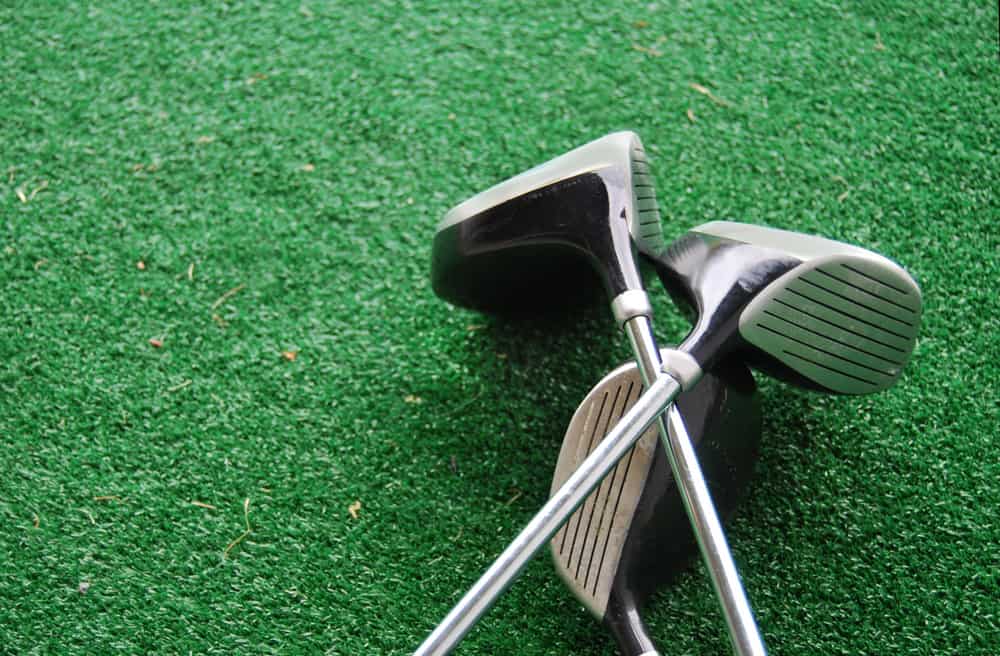
About Brittany Olizarowicz
Britt Olizarowicz started playing golf at the age of 7. She played Division 1 College golf at St.Johns University, where she won two tournaments at the collegiate level. After college Britt went on to become a Class A PGA Professional. Her love for the game spans almost her entire life. Today Britt loves sharing her knowledge of golf through her writing. After all, to teach the game of golf, you must first have a love for it.
Reader Interactions
Leave a reply cancel reply.
Your email address will not be published. Required fields are marked *
Important Info
Safety Disclaimer
Privacy Policy

Golf Driver Shaft Length (Buying Guide)
Are you struggling to achieve the ideal ball flight and distance with your driver? The culprit may be the length of your driver shaft. Finding the optimum driver shaft length for your swing can have a significant impact on your performance on the golf course.
In this comprehensive guide, we’ll explore all aspects of driver shaft length, including how to measure it accurately, how your height can influence the ideal length, and the pros and cons of different lengths.
We’ll also take a closer look at the driver shaft length preferences of professional golfers on the PGA Tour.
So, whether you’re a beginner or an experienced player, read on to discover how to select the perfect driver shaft length for your game and take your driving distance and accuracy to the next level.
Resource: Golf Practice System with Step by Step Practice Plans + Video Lessons
How to Measure Driver Shaft Length
Measuring the length of your driver shaft accurately is crucial for achieving optimal performance on the course. Here’s a step-by-step guide on how to measure your driver shaft length:
- Place your driver on a flat surface, with the clubhead pointing towards you.
- Using a measuring tape, place the end of the tape at the center of the clubhead.
- Stretch the measuring tape along the shaft towards the grip.
- Stop at the end of the grip and take note of the measurement in inches.
It’s important to note that the length of your driver shaft can affect your swing and overall performance. A longer shaft can potentially increase distance, while a shorter shaft can enhance accuracy.
Consider the following tips and recommendations to help guide you in determining the best driver shaft length for your game:
- Visit a professional club fitter who can analyze your swing and recommend the appropriate driver shaft length for your specific needs.
- Use a driver shaft length calculator to determine the optimal length based on your height and swing characteristics.
- Experiment with different shaft lengths to see which one feels the most comfortable and allows you to perform at your best.
By following these guidelines and taking the time to ensure you have the correct driver shaft length, you can improve your golf game and enjoy greater success on the course.
Driver Shaft Length by Height
When it comes to selecting the right driver shaft length for your golf game, your height plays a significant role.
The ideal length of your driver shaft is dependent on your height as it can impact your swing and overall performance on the golf course.
While there is no hard and fast rule on driver shaft length by height , there are general guidelines that can help you make an informed decision.
The following driver shaft length chart by height provides a helpful starting point:
It’s important to note that this chart serves only as a guideline, and is not a definitive rule. Other factors such as swing speed, ball flight, and personal preference can also play a role in determining the best driver shaft length for you.
When it comes to club fitting, it’s best to work with a professional who can provide personalized recommendations based on your individual needs and goals.
By taking into consideration your height, swing, and other factors, a skilled professional can help you find the optimum driver shaft length for your game.
Pros and Cons of Different Driver Shaft Lengths
Choosing the right driver shaft length can have a significant impact on your golf game. However, both long and short driver shafts come with their own set of advantages and disadvantages. Here’s what you need to know:
Pros and Cons of a Long Driver Shaft Length
Long driver shafts can potentially increase your distance off the tee, but they can also be more difficult to control. Here are some pros and cons of a long driver shaft:
If you’re an experienced golfer with a faster swing speed, a longer driver shaft may be beneficial for you.
However, if you struggle with accuracy or have a slower swing speed, a longer shaft may not be the best option for your game.
Pros and Cons of a Short Driver Shaft Length
Shorter driver shafts can enhance your accuracy, but they may sacrifice some distance. Here are some pros and cons of a short driver shaft :
Consider your playing style and skill level when deciding on a driver shaft length.
If you struggle with accuracy or have a slower swing speed, a shorter shaft may be a better fit for your game. However, if you prioritize distance and have a faster swing speed, a longer shaft may be more suitable for you.
Remember, the ideal driver shaft length for you ultimately depends on your unique swing characteristics. It’s important to get fitted by a professional to ensure you have the correct length and other essential specifications for your driver.
By understanding the pros and cons of both long and short driver shafts, you can make an informed decision about which option may be best for your golf game.

PGA Tour Driver Shaft Lengths
Professional golfers on the PGA Tour have unique preferences when it comes to their driver shaft lengths.
While some players opt for longer shafts to increase their distance, others prefer shorter shafts for greater accuracy.
Interestingly, the average driver shaft length for PGA Tour players is around 44.5 inches, which is shorter than the standard length of 45.5 inches found in most off-the-rack drivers.
Several factors influence the driver shaft length choices of PGA Tour players, including swing speed, accuracy, and personal preference.
For example, Bryson DeChambeau, known for his powerful swing, uses a 45.5 inch shaft, while Tiger Woods, known for his accuracy and control, uses a shaft that is only 43.5 inches long.
Shorter Shaft Lengths
PGA Tour players who prefer shorter shafts typically value accuracy over distance. By using a shorter shaft, players can better control their ball flight and reduce their chances of hitting errant shots.
In addition to Tiger Woods, other PGA Tour players who use shorter shafts include Justin Thomas (43.5 inches), Collin Morikawa (43.25 inches), and Rory McIlroy (43.5 inches).
Longer Shaft Lengths
For PGA Tour players who prioritize distance, longer shafts can help achieve greater swing speed and ball velocity.
However, longer shafts may also increase the chances of mis-hits and reduce accuracy.
Bryson DeChambeau, who is known for his long drives, uses a 45.5 inch shaft. Other PGA Tour players who use longer shafts include Dustin Johnson (45 inches) and Phil Mickelson (45.5 inches).
It’s important to note that driver shaft length is just one of many factors that can influence a player’s performance on the course.
Each golfer has their unique playing style, swing, and strengths, so finding the right driver shaft length requires individual consideration and experimentation.
What is the importance of finding the right driver shaft length?
Finding the right driver shaft length is crucial for optimizing your golf game. The length of your driver shaft can greatly affect your swing and overall performance on the course. It can impact distance, accuracy, and control, so it’s essential to find the right fit.
How do I measure my driver shaft length?
To measure your driver shaft length, follow these steps: 1. Place the driver on a flat surface, ensuring it is properly aligned. 2. Use a measuring tape or ruler to measure from the sole of the club to the end of the grip, excluding the cap. 3. Ensure the measurement is accurate and take note of the length. 4. Alternatively, you can use a driver shaft length calculator for more precise measurements.
Does my height affect the ideal driver shaft length for me?
Yes, your height can influence the ideal driver shaft length for you. Generally, taller players may benefit from longer shafts, while shorter players may find shorter shafts more suitable. However, it’s important to consider other factors such as swing technique and personal preference as well.
What are the pros and cons of different driver shaft lengths?
The pros and cons of different driver shaft lengths include: – Longer Shaft: – Pros: Potential for increased distance due to increased clubhead speed. – Cons: Can be more challenging to control and may lead to less accuracy. – Shorter Shaft: – Pros: Improved control and accuracy, especially for those with a slower swing speed. – Cons: Potential for reduced distance due to decreased clubhead speed. Ultimately, the choice between longer and shorter shafts depends on your playing style and skill level.
What driver shaft lengths do professional golfers on the PGA Tour use?
Professional golfers on the PGA Tour have varying preferences for driver shaft lengths. Some players opt for longer shafts to maximize distance, while others prefer shorter shafts for improved accuracy. The choice of driver shaft length among professionals often depends on individual playing styles and personal preferences.
Golf Practice System for Lower Scores
Learn the exact golf practice routines thousands of students at Foy Golf Academy are using to lower their golf scores.
Follow these step by step practice plans and watch video lessons to learn how to improve your golf swing, chipping, and putting fundamentals.
Get access to hundreds of golf drills to practice as well as content on the mental side of golf, fitness plans, worksheets, and many more resources. This is a complete golf practice system.
Start Following These Practices —> Nick Foy Golf Practice System
Nick Foy, Instructor

*Some links on this page may contain affiliate links. Thank you for supporting me.
Don’t miss out
Breaking 90, 80, 70 golf practice plan.

The 15 Best Golf Drills that
Lowered my golf scores.
Sign up to get this resource + more helpful golf lessons to your inbox
- CBSSports.com
- Fanatics Sportsbook
- CBS Sports Home
- Champions League
- Motor Sports
- High School
- Horse Racing
Men's Brackets
Women's Brackets
Fantasy Baseball
Fantasy football, football pick'em, college pick'em, fantasy basketball, fantasy hockey, franchise games, 24/7 sports news network.
- CBS Sports Golazo Network
- PGA Tour on CBS
- UEFA Champions League
- UEFA Europa League
- Italian Serie A
- Watch CBS Sports Network
- TV Shows & Listings
The Early Edge
A Daily SportsLine Betting Podcast
With the First Pick
NFL Draft is coming up!
- Podcasts Home
- The First Cut Golf
- Beyond the Arc
- Eye On College Basketball
- NFL Pick Six
- Cover 3 College Football
- Fantasy Football Today
- My Teams Organize / See All Teams Help Account Settings Log Out
Drive Distance

- Remember me Not recommended on shared computers
Forgot your password?
- WRX Club Techs
Driver length. PGA and lpga
By rexroh October 28, 2019 in WRX Club Techs
- Reply to this topic
- Start new topic
Recommended Posts
I have been playing around with driver length for at least a couple of years now.
I am 76 years old and over the past three years or more I have lost considerable distance. At least 50 yards and at times nearer 70 yards. This I accept is partly due to age and Ill health over the past couple of years. Five years ago I was on a single figure index but now I am almost out to 18. Most of my bad scoring is caused by not being able to reach par 4’s in two. Hence the experimenting with longer and shorter driver shafts. As I do not have access to the measuring equipment (spin etc) most of my experimenting is done by trial and error.
While researching I found that the average PGA pro’s driver is often quoted as 44.5 inches. Now doing more research I find that the average LPGA driver length is 45.25 inches.
The women generally have slower swing speeds than the men. Yet they opt for a longer shaft. I wonder why this is. Also my swing speed would be much lower again so I am thinking maybe I should look more into the longer shaft. I hit my good drives about 220 yards. Today I used a 44.5 length Ping G30 driver which I hit well but did not gain anything in distance. I have always been a good driver hitting 12 of 14 fairways or better. On a bad day this may be 10 of 14. Because of the lack of length I do not miss many fairways. I also use a Taylormade M1 driver that gives me another 3 to 5 yards but not quite as accurate.
I am interested in those who have been down this path and what they finally decided to use. Shorter, standard, or longer. Also comments from experienced fitters who must deal with this problem frequently.
I have read most if not all the postings here on driver length but have not found anything on why the LPGA drivers were longer.
Link to comment
Share on other sites.
- Created 4 yr
- Last Reply 3 yr
Top Posters In This Topic

Popular Days
rexroh 5 posts
Howard_Jones 4 posts
rybo 2 posts
animalgolfs 2 posts
Oct 28 2019
Oct 27 2019
Oct 29 2019
Oct 31 2019
Popular Posts
Howard_jones.
October 28, 2019
Ive made quite a few drivers for both PGA and LPGA players, and the average for those i have build clubs for is 44.50" for PGA and 44.00" for LPGA (longest driver for Golf ive ever made was 45.00") Se

If you go way back they is an article in the Shoptalk archive written by Bernie Baymiller who advocated a long(48"+) driver for seniors to regain lost distance. It was written in the late 90's but his

MountainKing
My Dad had similar struggles when he got into his 70's. Ultimately he just moved up to the forward tees. At 220 off the tee you probably should be looking to play the course at 6000 yards.
Ive made quite a few drivers for both PGA and LPGA players, and the average for those i have build clubs for is 44.50" for PGA and 44.00" for LPGA (longest driver for Golf ive ever made was 45.00") Seems like you look at LPGA in ASIA where longer clubs is quite common.
Only if we have a natural flat swing plane, and a really good eye to hand coordination we can take advantage of a longer club, but i have not seen that player yet, so if you want to keep the average good, and the numbers of fairway hits high, going longer is hardly ever the way to go.
You dont tell specs of the clubs you got, neither for length or weight,(one of them was 44.50") so its hard to suggest anything else than that you read my DIY driver tune up who have helped lots of player to improve distance and accuracy on the club they got, or to figure out where to go if a change is better. It might be a few grams added head weight thats needed, a lighter shaft, or a shaft with more weight.
https://forums.golfwrx.com/discussion/909991/diy-driver-tune-up-diy-fitting/p1

DO NOT SEND PMs WITH CLUB TECH QUESTIONS - USE THE PUBLIC FORUM.
Thanks Howard.
I have read your driver tune up several times and use parts of it when I can. Due to illness and operations I have not been able to have any range sessions. I use a mobility scooter on the course to get around. I hope to be able to do some range sessions early next year when I am more recovered and I can do more extensive testing. Most of the testing done now is actual play and noting any change of where I am on the course.
I cannot recall where I got the LPGA driver length from but thought it was from an American golf magazine on the internet. I will keep experimenting as I do enjoy trying to push the boundaries of equipment.
Go to the Ping website and you can lookup all of their staff players specs. Interestingly there is only woman who is playing a driver under 45". All of the rest are playing 45" and longer. There are 5 women playing clubs 46" and longer.
Try a longer club, it may work for you.
> @rybo said:
> Rexroh,
> Go to the Ping website and you can lookup all of their staff players specs. Interestingly there is only woman who is playing a driver under 45". All of the rest are playing 45" and longer. There are 5 women playing clubs 46" and longer.
> Try a longer club, it may work for you.
We never know before its tried, but without LM numbers its hard to judge this.
His good drives seems to be 220, so if we assume he has 85 Mpg club speed, it might look like this.
1 inch longer (44.50" to 45.50") gives a theoretical potential of 4 mpg club speed, and if we set smash to 1.50 its 6 Mph ball speed and average 12 yards "all else equal"
If his smash factor NOW is as low as 1.43 (not unusual), and improves that to 1.5, he get the same 6 mph ball speed and 12 yards.
The question is, what gives the highest average ball speed, and highest number of fairway hits or decent dispersion sideways?
It might be worth a try with a longer club, but not before he is certain that the club he has cant deliver more than it does, sometimes a few grams added head weight makes wonders
IF a longer club is on the list, he should go a see a club fitter, that might improve it all for him
Don't disagree with you, the issue is sometimes things on paper just don't work out the same in real life and he may see greater gains (or losses) then expected.
Also Ping knows how to fit golf clubs, and their female staff is playing clubs on the longer side (so are the men). The Tour does not use shorter drivers, again look at what the men on Ping's staff are using, a couple are under 45" and the majority are longer then 45", with some using 46"+. With a bit of practice and acclimation it's pretty easy to hit a longer club. Rory who is arguably the best current driver of the golf ball uses a 45 1/2" driver and he's about 5' 6" on a good day.
> Don't disagree with you, the issue is sometimes things on paper just don't work out the same in real life and he may see greater gains (or losses) then expected.
> Also Ping knows how to fit golf clubs, and their female staff is playing clubs on the longer side (so are the men). The Tour does not use shorter drivers, again look at what the men on Ping's staff are using, a couple are under 45" and the majority are longer then 45", with some using 46"+. With a bit of practice and acclimation it's pretty easy to hit a longer club. Rory who is arguably the best current driver of the golf ball uses a 45 1/2" driver and he's about 5' 6" on a good day.
I took a peak into PINGs LPGA players, and they are generous with specs, Kudos for that. It seems like shorter the player was, longer the driver is (did not make stats, just the impression i got), and ive seen this years ago on the Asian tour, but have not noticed this as a trend i Europe.
animalgolfs
Doesn't Brooke play @48"?
9 Clubs Sunday Bag
UST Mamiya - Lamkin - RXS
https://forums.golfwrx.com/topic/1840618-witb-731-full-bag/
> @animalgolfs said:
> Doesn't Brooke play @48"?
According to the Ping website she does.
Callaway Rogue ST Max 10.5° /Xcaliber SL 45 a flex, Callaway Rogue ST Max Heavenwood /Xcaliber FW a flex, Maltby KE4 ST-H 3h /Rapid Taper a flex, Maltby KE4 ST-H 4h /Rapid Taper a flex, Maltby KE4 Tour TC 5h /Rapid Taper a flex, Maltby KE4 Tour+ 6-G /Xcaliber Rapid Taper a flex, Maltby Max Milled 54° & 58° /Xcaliber Wedge 85 r flex, Mizuno Bettinardi C06

Women also make better swings and contact than men just from a purely anatomical standpoint (both flexibility and body shape), so they're better suited to get away with a longer club.
Get implants and do yoga and then play the longest driver you can find.
Brooke Henderson grips down on her driver which was 48 inches. Played about 46 inches but hard to be exact. I will have another look at the Ping site and possibly others. I am also re reading Tom Wishon's book on the search for the perfect club. His suggestion appears to be shorter still.
Currently Howards Driver tune up guide appears to be best but I will keep experiments going.
> @rexroh said:
> Brooke Henderson grips down on her driver which was 48 inches. Played about 46 inches but hard to be exact. I will have another look at the Ping site and possibly others. I am also re reading Tom Wishon's book on the search for the perfect club. His suggestion appears to be shorter still.
> Currently Howards Driver tune up guide appears to be best but I will keep experiments going.
I'm afraid your only recourse is going to be longer in regards to gaining back some distance.
I speak from witness - seen many of members lose distance due to age. Most were solid sticks - just like you. Couple experimented going longer & had success -

I agree. If you haven't already at least tried a extended length driver, why not give it a whirl? You say you like to experiment right? I think the key is to not only go long, but go light as well. Try to find a driver head no heavier than 185 grams and a shaft no heavier than 50 grams. The recipe is to stay under 285 grams total including grip. Start at 48" and adjust down as necessary in 1/2" increments. I'm sure some will scoff at this notion but I've seen it work for a lot of older seniors including myself.
If you go way back they is an article in the Shoptalk archive written by Bernie Baymiller who advocated a long(48"+) driver for seniors to regain lost distance. It was written in the late 90's but his concept should work as well or better today with the larger driver heads. I think he was a reason the Chicago Golf 966SD driver became a cult favourite. In my view it was a better head than the Big Bertha and one of the best of the era. I still have an 11° that I play.
My Dad had similar struggles when he got into his 70's. Ultimately he just moved up to the forward tees. At 220 off the tee you probably should be looking to play the course at 6000 yards.
Taylormade Qi10 9*
Taylormade Stealth 3w
Taylormade Stealth 19* Hybrid
Taylormade Stealth 22* Hybrid
Taylormade P770 5-PW
TM Itsy Bitsy

Yes and picked up 25 yards when she switched.
She chokes down on every club including driver before she switched to 48”
.thumb.jpg.74a0cbedd5238d4dd470c5df118bd198.jpg)
Titleist_PT23
I've wondered whether the PGA average is still < 45 inches. I have no firsthand knowledge like Howard but other than Bubba I can't recall a WITB that was less than 45 in recent times (of course, these specs could be wrong too). I totally get that for many players strike will be much better with a shorter club. Bu the pros are already extremely gifted to begin with, so if anyone can handle it they would be the people to do so. I don't know but my guess is that most of the younger pros today started (at least in a grown teenage/adult body frame) when all the divers you could pick up were 45+. Hence, it's the only thing they've swung an they just figured out how to hit it. In contrast, in prior years there were probably a lot of players that started when drivers were less than 45 inches so that's what they were accustomed to.
I've never been able to figure out why the LPGA players are using clubs that are so long (relatively speaking). Clearly it works and they have some swing characteristics that may help, but logically I've never heard what seemed like an overly compelling reason.
> @agolf1 said:
> I've wondered whether the PGA average is still < 45 inches. I have no firsthand knowledge like Howard but other than Bubba I can't recall a WITB that was less than 45 in recent times (of course, these specs could be wrong too). I totally get that for many players strike will be much better with a shorter club. Bu the pros are already extremely gifted to begin with, so if anyone can handle it they would be the people to do so. I don't know but my guess is that most of the younger pros today started (at least in a grown teenage/adult body frame) when all the divers you could pick up were 45+. Hence, it's the only thing they've swung an they just figured out how to hit it. In contrast, in prior years there were probably a lot of players that started when drivers were less than 45 inches so that's what they were accustomed to.
> I've never been able to figure out why the LPGA players are using clubs that are so long (relatively speaking). Clearly it works and they have some swing characteristics that may help, but logically I've never heard what seemed like an overly compelling reason.
Time is running fast, and its about 3 years now since i made the last driver for a PGA or LPGA pro, so i im simply not "up to date" with the trend changes that might be out there. The heads we play has changed from about 2016, with way more varieties to VCOG and RCOG, the area of the face with "high ball speed" has become larger, and as a sum, this might allow for more varieties to impact than it did before. Again, only testing can tell whats the best for each player, so i might be "old school", advocating drivers of 44.00" for those who plays "standard" length irons, max 44.50", but that could be "outdated" knowledge now,
> @"Howard Jones" said:
> > @agolf1 said:
> > I've wondered whether the PGA average is still < 45 inches. I have no firsthand knowledge like Howard but other than Bubba I can't recall a WITB that was less than 45 in recent times (of course, these specs could be wrong too). I totally get that for many players strike will be much better with a shorter club. Bu the pros are already extremely gifted to begin with, so if anyone can handle it they would be the people to do so. I don't know but my guess is that most of the younger pros today started (at least in a grown teenage/adult body frame) when all the divers you could pick up were 45+. Hence, it's the only thing they've swung an they just figured out how to hit it. In contrast, in prior years there were probably a lot of players that started when drivers were less than 45 inches so that's what they were accustomed to.
> > I've never been able to figure out why the LPGA players are using clubs that are so long (relatively speaking). Clearly it works and they have some swing characteristics that may help, but logically I've never heard what seemed like an overly compelling reason.
> Time is running fast, and its about 3 years now since i made the last driver for a PGA or LPGA pro, so i im simply not "up to date" with the trend changes that might be out there. The heads we play has changed from about 2016, with way more varieties to VCOG and RCOG, the area of the face with "high ball speed" has become larger, and as a sum, this might allow for more varieties to impact than it did before. Again, only testing can tell whats the best for each player, so i might be "old school", advocating drivers of 44.00" for those who plays "standard" length irons, max 44.50", but that could be "outdated" knowledge now,
Interesting comment on the driver heads. I also don't think "old school" means outdated or inferior. For many, especially average players, my guess is that it results in better outcomes.
I currently play a 45 inch driver and grip down 1/2 inch or so. I've never been able to hit something longer than 45 well when playing at full length. But the truth is that I give up after about 5-10 swings as well. The timing and contact is not good and I just revert to what is comfortable. If I could practice everyday, maybe I could get some net benefit from the longer club (or maybe not, as my swing is only so good).
I have tried longer as well as shorter. To control accuracy I cannot swing as hard with a 48 inch driver. As the shaft gets shorter I can swing harder and still have control. I suspect swing speed stayed the same. I tried a ladies’ driver head (Ping) to get a lighter head and shaft. This head was less than 460cc (an older model) but that seemed to be worse than a standard head. I had no control of the club head.
I have tried to source a shaft that is less than 50 grams. To get a Ping Distanza shaft here (New Zealandj I have been quoted about $200 usd. This is well beyond what I want to pay for experiments. I search local auctions regularly but lighter shafts are very rare here.
My last round with ping g30 head and regular Ping shaft (44.5”) felt good but as I was playing back tees it was hard to see if there was an improvement in distance. Tomorrow should help when I play the front tees (white - normal mid week tees). I play 3 times a week from those tees.
I will try and sort the best combination of short shaft and head and long shaft and head then have a shoot out.
Off to do some more searching.

Lacey Underall
Obviously this is an equipment forum but.....
I have a somewhat unique background being a personal trainer for 8+ years and a fitter for about the same amount of time. The answer to significant distance loss is NOT going to be found in your equipment unfortunately. The answer is a combination of getting into better shape (both strength AND flexibility) and taking some lessons to learn how to create better "lag" on the downswing.
2023 WITB Driver: Callaway Epic Max LS 10.5* - MMT 70x 3 Wood: Callaway Paradym TD 15* - Kai'li White 80x
Utility: Callaway X-Forged UT 21* 4-PW: Callaway Apex MBs - Project X 6.0 52* Wedge: Callaway Jaws Raw S Grind 58* Wedge: Callaway Jaws Raw Full Toe Putter: Odyssey Tri-Hot 5k Double Wide DB
> @"Lacey Underall" said:
> Obviously this is an equipment forum but.....
> I have a somewhat unique background being a personal trainer for 8+ years and a fitter for about the same amount of time. The answer to significant distance loss is NOT going to be found in your equipment unfortunately. The answer is a combination of getting into better shape (both strength AND flexibility) and taking some lessons to learn how to create better "lag" on the downswing.
While I tend to agree with you my other injuries from the past (mainly back) prevent flexibility to some extent, Lessons can also help but I need to practice after lessons and at the moment that is also out of the equation.
Currently a shaft at 47.5 inches (soft regular) has increased distance if I keep the swing smooth. I will keep testing on the course. It is fun.
Join the conversation
You can post now and register later. If you have an account, sign in now to post with your account.

× Pasted as rich text. Paste as plain text instead
Only 75 emoji are allowed.
× Your link has been automatically embedded. Display as a link instead
× Your previous content has been restored. Clear editor
× You cannot paste images directly. Upload or insert images from URL.
- Insert image from URL
- Submit Reply
Recently Browsing 0 members
- No registered users viewing this page.

2024 RBC Heritage - Discussion and Links to Photos
GolfWRX_Spotted posted a topic in Tour and Pre-Release Equipment , Monday at 08:55 PM

2024 Masters - Discussion and Links to Photos
GolfWRX_Spotted posted a topic in Tour and Pre-Release Equipment , April 10

Rory McIlroy testing a new TaylorMade "PROTO" 4-iron – 2024 Valero Texas Open
atursky posted a topic in Tour and Pre-Release Equipment , April 3

2024 Valero Texas Open - Discussion and Links to Photos
GolfWRX_Spotted posted a topic in Tour and Pre-Release Equipment , April 1

2024 Texas Children's Houston Open - Discussion and links to Photos
GolfWRX_Spotted posted a topic in Tour and Pre-Release Equipment , March 25
Popular Now
By jigsaw1011 Started 2 hours ago

By J-Blade Started 4 hours ago
By kiawah Started 4 hours ago

By Golfnutgalen Started 5 hours ago

By me05501 Started 6 hours ago
Welcome. Register Here.
Come on in, the water is fine...
Recent B/S/T

MerryTex · Started 15 minutes ago

LFreeeman · Started 17 minutes ago
dubogey · Started 39 minutes ago
golf4life21 · Started 56 minutes ago
basketballthreeball · Started 1 hour ago

GolfWRX_Spotted · Started December 5, 2023
- Existing user? Sign In
The Bag Room
- Tour & Pre-Release Equipment
- Golf Sims/GPS/RFs/Apps
- Golf Style and Accessories
The Club House
- General Golf Talk
- Classic Golf And Golfers
- Courses, Memberships and Travel
- Groups, Tourneys, and Partners Matching
WRX Academy
- Instruction & Academy
- Rules of Golf and Etiquette
- Swing Videos and Comments
Classifieds & ProShops
- Deal/No Deal
Website Help
- Forum Support
- BST AD Help Forum
My Activity Streams
- BST/Deal Activity
- All Activity
- Unread - No BST/19th
- Subscriptions
Classifieds
- For Sale Forum
- Wanted to Buy
- Mall of Pro Shops
- Where Did My Ad Go?
- Trade In Tool
- Create New...

Breaking $100 - Free PGA Betting Picks - Golf Best Bets for the 2024 RBC Heritage
M ore on Scheffler in its own segment, but what we saw at the Masters from Ludvig Aberg was sensational. He joins Jordan Spieth, Dan Pohl, Jason Day, Jonas Blixt, Sungjae Im and Will Zalatoris as the only debutants to finish runner up at Augusta.
For those of you who are new to the article, Breaking $100 is a comprehensive PGA betting guide on how to squeeze every cent out of your $100. We will be breaking $100 into a betting card of outrights, first-round leaders, placings, and a "farewell fiver," all in an attempt to turn a structured betting strategy into a profitable and entertaining Sunday sweat. $100 is easily divided or multiplied, so please only bet amounts that you can afford to lose. You can find me on X an unhealthy amount of the time @TheModelManiac if you have any questions, compliments, or insults for me.
Recap of Last Week
- Outrights -$10
- Cameron Young T20 +350
- Scottie Sheffler T10 -210
- Farewell Fiver -$5
- Total -$39.61
Hideki Matsuyama (-130) finished outside the top-20 after 7 top-20s in his last 8 appearances... sad trombone. Will Zalatoris finished 9th, barely missing out on his top-5. Matthew Fitzpatrick bogeyed his 72nd hole finished T22, nuking that top-20 bet at the very last minute. We were a few strokes away from a few big swings towards profitability.
As Kyle and I point out in the above posts, Scottie Scheffler has been a cheat code for the last little while. If we track his bets back to the start of 2023, Scheffler is profitable across all markets, but we have just made it through the Scottie gauntlet, having now won the Players, the Masters, and the WM Phoenix Open twice. He has his courses he thrives at and that will be fun to bet next year when he enters this stretch.
Outrights ($10)
Ludvig Aberg $5.07 (14-1 Bet365)
I fully understand that this bet could go up in flames because of the week Ludvig has just been through, but after a 2nd place finish at Augusta he is in great form and likely continues that into this week. He is absolutely on our card because of his stellar track record on these shorter tracks. Prior to another top-10 at the Masters, four of his five top-10s came at courses shorter than 7,300 yards. Aberg won the RSM in the fall gaining five strokes off the tee in his three rounds on the Seaside Course. His abstract ability to possess lustful length and adoring accuracy has found him dominating at these club down venues, where he can thread his tee shots into thin bottle necks 310 yards down the fairway.
Despite gaining the least amount of strokes from 100-150 in this field, he still finds himself in the middle of the pack from a weighted perspective as he is rather handy from 150 and out. In his win at the RSM and runner up finish at the Masters, he gained the most strokes from tee-to-green in the win and the 2nd-most last week. This venue, with its small greens and concentrated approach shots from 175-200 (28% last year) should reward his total driving and long iron play. And if he does thread the needle into tight bottle necks, a wedge in any pro's hands is usually going to be closer than a 7 iron in Scottie's hands (I had to check this stat to be sure and Scottie averages 26 feet from 150-200, while the PGA Tour average is 22 feet from 100-150. Still a laughably close, though). Aberg is in great form, heading to a great course fit. Bring it home for us you stud!
Sahith Theegala $2.25 (40-1 FanDuel)
Sahith Theegala is no stranger to the danger of a claustrophobic venue like Harbour Town. In fact, not as tight as H Town, but Silverado Resort and Spa, where Sahith won his first PGA event, is a similar layout, not much more than 7,000 yards in length. Theegala has also drastically improved his driver, hitting it further than average, but also gaining on the field in accuracy in four of his last six starts. And if the driver flirts with a DUI this week, his ability to create magic from the depths of the coquina shells under the trees that line the narrow fairways here. He is basically the PGA equivalent of Tarzan, swing his way out the jungle with grace and majestic mastery of ridiculous recovery shots.
Now for the fun part - Sahith's short game. This is how he wins tournaments. His ball striking ranks 15th in this field but his putter has that beat with a top-7 ranking in 2024. Strangely, Theegala has been rather awful around the greens, losing just shy of 8 strokes around them in his last 15 rounds since gaining 4 strokes around the greens at Bay Hill. From tracking him over that period, it seems like its one really bad shot that he skulls over the green or leaves in the bunker that derails any momentum in that statistical department. However, he gained just shy of 6 strokes around the greens last year and if that chipping comfort allows the rest of his game to thrive in the tranquil conditions, we can expect Sahith to contend for his 2nd win in less than a year.
Tom Kim $1.01 (70-1 at BetRivers but 55-1 at DK now)
We are just going to keep going back to Tom Kim as long as his price allows us to only invest 10% of our outright exposure on him. The recent form for Kim is terrible, but he has a win at the Wyndham Championship and two at the Shriners, both shorter, more positional tracks similar to H Town. What is really exciting about Kim is his final round at Augusta, shooting a 66 and gaining 6.5 strokes on the field, 2 strokes better than Scottie's 68 which was the second best round of the day. His irons gained just shy of six strokes last week too! If he can ride that momentum into Harbour Town this week, he stands a fantastic chance for his fourth win in less than 2 years, and his biggest yet!
Christiaan Bezuidenhout 75-1 $0.94 (FanDuel)
His iron play has regressed a smidgeon lately, but amidst the rounds he is losing strokes, he is also gaining +2.49 in R4 of the Valspar and +2.99 in R3 of the Players. Since working with Mike Caroll on his strength and conditioning, as well as his speed training, Bezuidenhout has gained +0.2 per round off the tee in his last two tournaments. He is currently losing 11 yards to field each drive, but at this venue, that should not haunt him as much as other longer tracks. Bez has a T13, T9 and T25 in his last three appearances on tour, with the 13th at the Players an exciting finish in the strongest field the PGA Tour will see all year (non-majors). Bezuidenhout's long term upside looks as bright as the South African sun he hails from, and we would rather be early on him than miss my fellow countryman's first PGA Tour win.
Byeong Hun An 75-1 $0.94 (FanDuel)
I could end the writeup of Benny An by saying that only Scottie Scheffler gained more strokes tee to green than An at the Masters. Now, his power driver off the tee will have to be pocketed, but that does not mean he lacks weapons OTT at Harbour Town. An has missed two cuts in his last half-dozen starts, but in the other four he had finishes of T16, T8, T21, T16. Despite having the 2nd-worst accuracy in the field, An still gains the 15th most strokes off the tee at courses shorter than 7,200 yards. An has struggled here during the stretch he was struggling with his golf in general, but back in 2018 he finished 8th here, so there are some good vibes for Benny as he looks to sail away from Harbour Town with his first PGA Tour win after losing to Grayson Murray in a playoff in Hawaii.
Jake Knapp 300-1 $0.27 (DK)
Since winning the Mexico Knapp has found himself playing some really inconsistent golf which includes a T4 at the Cognizant the week after his win. The form is lacking but we know what potential Knapp has, and if his surge at the Cog doesn't prove he can dismantle short venues, I can't help you. It is a signature event but 250-1 on a PGA Tour winner with three top-5s this year is straight up disrespectful. We are also going to betting him top-5 at ridiculous odds.
Placings ($85)
Below is a summary of how each golfer has done in each respective betting market based on the logic that we would bet them every event to return $100 in each market. Obviously, we don't do that, but it gives us a good idea of the profitability for each golfer and whether or not we are missing out on a golfer's upside by not being aggressive enough and bumping them up from a T20 to a T10. Or the other way around for guys who never quite crack the top 10 but always find themselves in the top 20. Let's call this the opportunity cheat sheet.
The Farewell Fiver ($5)
Round 1 3-ball parlay to win $255 (FanDuel)
Sooooo, it would sure be fun if this hit to get us off to an absolute banger of a Masters. A clean +5100 for four legs!
Below is my weekly podcast I do that goes in depth on all the bets you will read in this article. Good luck this week, and as always, may the odds be ever in your favor!!!
https://www.youtube.com/watch?v=gSDmzmLSqi8&t=22s
Win Big With RotoBaller
Our very own Joe Nicely recently took down a big DraftKings DFS tournament for the Travelers Championship. And as an encore, RotoBaller subscriber @tenndolly2 won $100K on FanDuel with the help of Joe and the rest of our Premium PGA team:
Golf DFS News and Player Outlooks
More pga analysis and dfs lineup picks.

Masters amateur Christo Lamprecht, 6-foot-8, does not have his head in clouds
10 Min Read
Tour Insider
Towering success and expectations follow the 23-year-old amateur into his Masters debut. He’s determined to enjoy the moment.
Change Text Size
Christo Lamprecht Sr. kept getting interrupted – by texts, calls and co-workers in the office who saw what was happening.
“I’m busy,” Lamprecht Sr. told them. “What’s so interesting?”
They implored him to check The Open’s leaderboard. That’s when it became clear.
“Oh, my goodness,” he said.
Some 8,500 miles away in Hoylake, England, his college-aged son was setting the golf world ablaze.
Who is this kid? Where did he come from? How is he doing this? At The Open Championship, of all places?
Lamprecht Sr. quickly caught up on the highlights. He saw his son, also named Christo, make routine birdies on Nos. 3 and 5, and hit his approach shot on the par-3 sixth to 4 feet. He watched the chip-in birdie on the 14th and one last one on the closing hole. The younger Lamprecht doffed his cap to the crowd and soaked in the moment as he walked off the 18th green, then signed for a 66 that no one could better on the opening day at Royal Liverpool Golf Club. The senior Lamprecht, an accountant back in his hometown of George, a coastal city in South Africa’s Western Cape, shook his head.
“I just couldn’t believe it,” he said.

Amateur Christo Lamprecht of South Africa smiles with the silver medal awarded for low amateur honors following the final round of The 151st Open Championship at Royal Liverpool Golf Club. (Keyur Khamar/PGA TOUR)
That Thursday at Royal Liverpool was Lamprecht’s “Hello world” moment. He didn’t sustain the remarkable play, but the golf world was introduced to another young phenom that day, one who amazed with the power produced by his 6-foot-8 frame.
Amateur Christo Lamprecht chips in for birdie at The Open
Lamprecht, 23, earned his place at The Open with his victory at the 2023 British Amateur. Now another major opportunity awaits. He is the headliner among the five amateurs in the field at this week’s Masters Tournament.
Lamprecht, a senior at Georgia Tech, is the top player in the World Amateur Golf Ranking and No. 2 in PGA TOUR University, trailing only Stanford’s Michael Thorbjornsen. History is on Lamprecht’s side, as well. He is the third Yellow Jacket to win the British Amateur, joining two important figures in Augusta National’s history: Bobby Jones, the club’s co-founder, and Charlie Yates, a former low-amateur in the Masters and the club’s longtime secretary.
Lamprecht’s presence is a connection to the past and another step in a bright future. He was a first-team All-American in 2023 and is on pace to earn that honor again this year. He’s finished no worse than T16 in eight starts this season, including a victory at the OFCC/Fighting Illini Invitational (at Olympia Fields) and two runners-up.
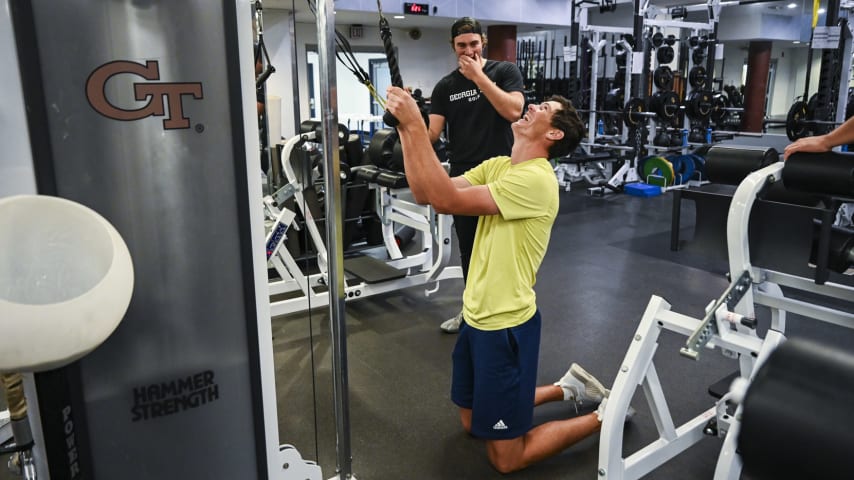
ATLANTA, GEORGIA - NOVEMBER 02: Christo Lamprecht of South Africa smiles as he works out with golf teammates in the Hugh Spruill Strength Center during a PGA TOUR University shoot at the Georgia Institute of Technology on November 2, 2023 in Atlanta, Georgia. (Photo by Keyur Khamar/PGA TOUR)

ATLANTA, GEORGIA - NOVEMBER 02: Christo Lamprecht of South Africa walks to class with golf teammate Adam Bratton at the Georgia Institute of Technology during a PGA TOUR University shoot on November 2, 2023 in Atlanta, Georgia. (Photo by Keyur Khamar/PGA TOUR)

ATLANTA, GEORGIA - NOVEMBER 02: Christo Lamprecht of South Africa smiles after playing ping pong at the Georgia Institute of Technology during a PGA TOUR University shoot on November 2, 2023 in Atlanta, Georgia. (Photo by Keyur Khamar/PGA TOUR)
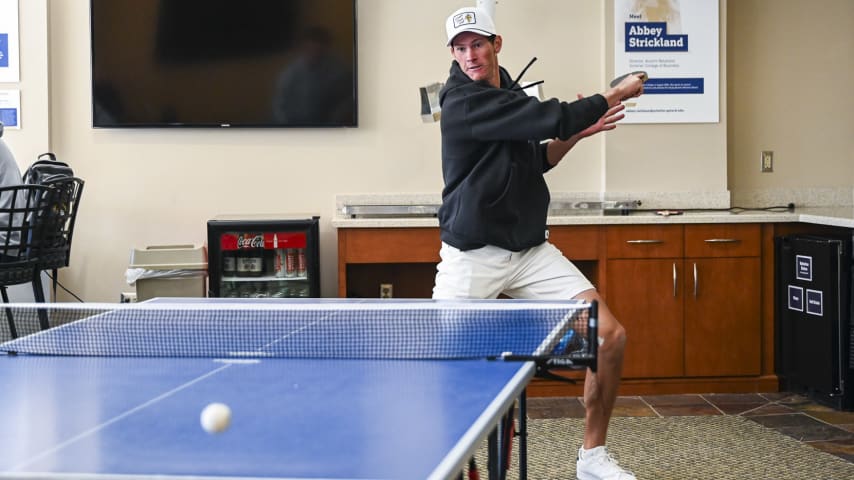
ATLANTA, GEORGIA - NOVEMBER 02: Christo Lamprecht of South Africa plays ping pong with a golf teammate at the Georgia Institute of Technology during a PGA TOUR University shoot on November 2, 2023 in Atlanta, Georgia. (Photo by Keyur Khamar/PGA TOUR)

ATLANTA, GEORGIA - NOVEMBER 02: Christo Lamprecht of South Africa walks from a class at the Georgia Institute of Technology during a PGA TOUR University shoot on November 2, 2023 in Atlanta, Georgia. (Photo by Keyur Khamar/PGA TOUR)

ATLANTA, GEORGIA - NOVEMBER 02: Christo Lamprecht of South Africa attends a class in the Scheller College of Business at the Georgia Institute of Technology during a PGA TOUR University shoot on November 2, 2023 in Atlanta, Georgia. (Photo by Keyur Khamar/PGA TOUR)

ATLANTA, GEORGIA - NOVEMBER 02: Christo Lamprecht of South Africa walks to a class in the Scheller College of Business building during a PGA TOUR University shoot at the Georgia Institute of Technology on November 2, 2023 in Atlanta, Georgia. (Photo by Keyur Khamar/PGA TOUR)

ATLANTA, GEORGIA - NOVEMBER 02: Christo Lamprecht of South Africa eats breakfast with his golf teammates in the Hugh Spruill Strength Center during a PGA TOUR University shoot at the Georgia Institute of Technology on November 2, 2023 in Atlanta, Georgia. (Photo by Keyur Khamar/PGA TOUR)

ATLANTA, GEORGIA - NOVEMBER 02: Christo Lamprecht of South Africa works out in the Hugh Spruill Strength Center during a PGA TOUR University shoot at the Georgia Institute of Technology on November 2, 2023 in Atlanta, Georgia. (Photo by Keyur Khamar/PGA TOUR)
He also was just two strokes off the lead halfway through the DP World Tour’s Alfred Dunhill Championship in his native South Africa. It wasn’t just his score that amazed. Lamprecht blasted an incredible 418-yard drive on the par-5 18th hole in the first round at Leopard Creek Country Club.
“No!” a SkySports announcer exclaimed. “That is ridiculous.”
“Everyone talks about it now,” Lamprecht told PGATOUR.COM, pointing out the shot was downhill and downwind, “but it was just another drive down the fairway for me.”
In golf’s distance age, Lamprecht stands alone with rare physical gifts that cannot be replicated. Only four of the 16 players on Georgia Tech’s basketball team are taller than him. He may be taking those talents to the PGA TOUR soon.
The top-ranked player in PGA TOUR University after this year’s NCAA Championship will follow in Ludvig Åberg’s footsteps by immediately earning a PGA TOUR card. The Masters, in addition to giving him invaluable experience on arguably the game’s biggest stage, will count toward those standings, meaning a good finish this week could set him up for so much more than the prestigious low-amateur prize.
Day in the Life | Christo Lamprecht | No. 2 in PGA TOUR University
The lessons he learned at Liverpool will come in handy.
A major championship allows an amateur to become famous faster than a ball leaves the clubface of Lamprecht’s driver. Five months after The Open, Lamprecht sat on a serene South African cliffside and recalled the week to PGATOUR.COM, which visited him in his home country last December.
“I felt probably every emotion possible throughout that four rounds of golf,” he said.
Lamprecht admits being thrown by the experience, by all the demands that followed his first round. The day was an amalgamation of excitement, gratitude and a heavy dose of “oh s---, this just got real.” He barely made the cut after a second-round 79 and finished T74. But he also was the only amateur to make the cut. And now he has an opportunity to put everything that he learned into practice at Augusta National, a course he’s played numerous times. Georgia Tech is just two hours away in Jones’ hometown of Atlanta.
This week won’t be the first time he’s seen Amen Corner or attempted to knock it tight to the traditional Sunday hole location on 16. There’s familiarity with the course, even if everything else surrounding the week will be different.
With Lamprecht set to see more TV time this week at Augusta National, he would like to address the elephant in the room. Something that has been a hot topic since Royal Liverpool. His swing is… interesting .
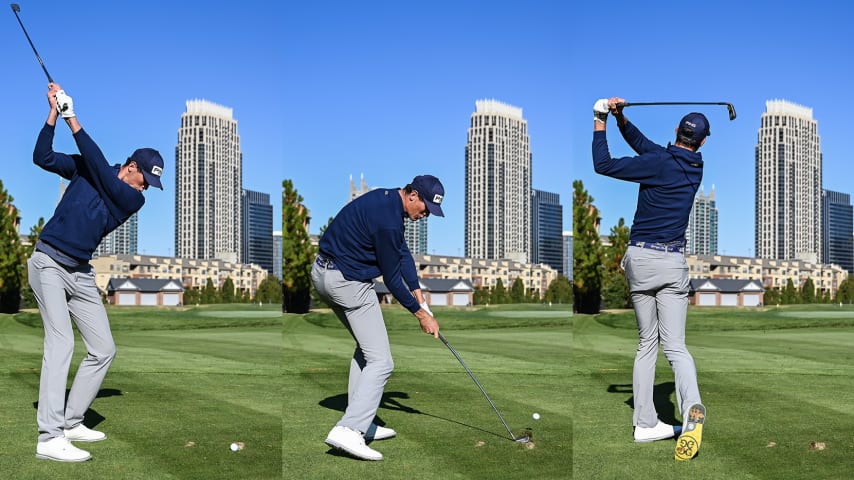
ATLANTA, GEORGIA - NOVEMBER 02: Christo Lamprecht of South Africa hits a shot on the par 3 course at the Georgia Institute of Technology Golf Practice Facility during a PGA TOUR University shoot on November 2, 2023 in Atlanta, Georgia. (Photo by Keyur Khamar/PGA TOUR)

ATLANTA, GEORGIA - NOVEMBER 02: Christo Lamprecht of South Africa hits balls on the range at the Georgia Institute of Technology Golf Practice Facility during a PGA TOUR University shoot on November 2, 2023 in Atlanta, Georgia. (Photo by Keyur Khamar/PGA TOUR)

If Rory McIlroy and Adam Scott are perfect portraits of the swing, à la Rembrandt, Lamprecht is more like the work of an abstract expressionist. By his own admission, his action is not visually appealing, but while it’s atypical, that’s a product of his lanky frame. His right knee dips abnormally low to the ground at contact as if he is chasing a 70 mph breaking ball low and away. The result is beautiful, though. Lamprecht averages about 325 yards off the tee on a standard course. He’s found the swing that works for him.
“The golf swing doesn’t need to be perfect, it just needs to be in control,” Lamprecht said.
While most observers obsess over the look of Lamprecht’s swing, another of the game’s sweet swingers says the secret is in the sound.
“As a person that understands ball striking, you don’t have to look at it, you just hear it,” said Ernie Els, a longtime friend of the Lamprecht family. “And at 16 (Lamprecht) had that distinctive hit on the ball. To come from this little town here and to have this kind of talent come out of this area is quite incredible.”
Lamprecht’s growth spurt came relatively late in his development, but at a perfect time for his golf. Lamprecht was required to develop a strong short game because he stood just 5-foot-7 at the start of high school. He loves his lob wedge and likes hitting soft flop shots as much as booming drives. When he practiced as a kid, he wouldn’t let himself leave until he holed a chip and a bunker shot, reminiscent of another South African, Gary Player.

ATLANTA, GEORGIA - NOVEMBER 02: Christo Lamprecht of South Africa hits a flop shot on the range at the Georgia Institute of Technology Golf Practice Facility during a PGA TOUR University shoot on November 2, 2023 in Atlanta, Georgia. (Photo by Keyur Khamar/PGA TOUR)
But when Lamprecht started rapidly sprouting, he went through new clubs every six months and pants even faster. His friends called him Melman, a reference to the giraffe from the movie “Madagascar.” Even now, standing 6-foot-8, Lamprecht’s legs are disproportionately longer than they should be for his height. With the maximum legal length of a driver capped at 46 inches, it limits the equipment he can use. His irons are 1.5 inches longer than standard.
This should come as no surprise, given that his grandfather was also 6-foot-8. His great-grandfather, who immigrated from Germany to George and was the town’s first doctor, dentist, and pharmacist before later becoming mayor, was 7 feet tall.
“When you get really tall, in the five percentile of height like he is… the conventional aspects of the golf swing can be thrown out the window because your levers are so long,” said Stewart Cink, the former Open champion and Georgia Tech alum who occasionally practices alongside the team. “It just creates a certain type of leg action and body action that we are not used to seeing. He’s made it his and done a pretty good job of it.”
Bruce Heppler, the Georgia Tech coach, puts Lamprecht in an elite class. “He’s the best I’ve seen in 40 years off the tee and he’s that good around the green, too,” said Heppler, who has led the Yellow Jackets for 29 years and is the 10th-longest tenured head coach in Division I.

ATLANTA, GEORGIA - NOVEMBER 02: Coach Bruce Heppler speaks about Christo Lamprecht at the Georgia Institute of Technology Golf Practice Facility during a PGA TOUR University shoot on November 2, 2023 in Atlanta, Georgia. (Photo by Keyur Khamar/PGA TOUR)
Those are bold statements, but the subject of that praise does his best to ignore it. Lamprecht tries not to look too far ahead.
“To think about everything that I want to accomplish and not actually appreciating where I'm at would do myself wrong,” he said.
Lamprecht may be a ceiling-scraper at nearly 7 feet, and yes, the sky is the limit, but he still doesn’t have his head in the clouds. He keeps a tangible reminder on the course, with “CWYC” written on his golf glove. It stands for “Control what you control,” and he taps the glove when he needs a reminder. He added a cross to the end of the acronym recently, a reminder of his faith but also an homage to a friend who tragically passed away in a car accident.
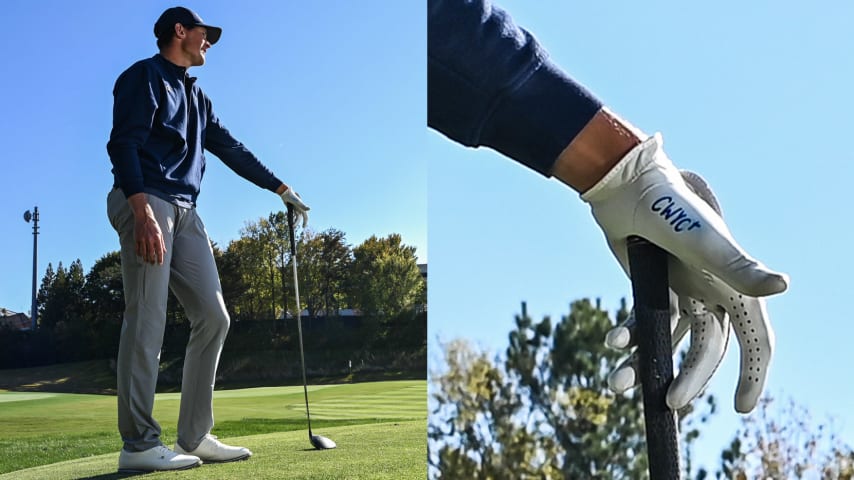
“I’m doing what I’m loving. I’ve got all 10 fingers and all 10 toes and I’m still enjoying the sport. I’ve got a lot of things to be thankful for,” Lamprecht said.
Lamprecht would like to think he’s slowly built toward thriving in these moments. The Open was the most recent, but he’s been stacking these experiences since he was a boy trying to hit carts on the range of Kingswood Golf Course. He refined his game at the Louis 57 Academy, a junior teaching program in the Southern Cape of South Africa founded by Louis Oosthuizen. Before he was a teenager, Lamprecht’s lesson plans were crafted with Oosthuizen’s input. He’d already become friends with Els, as well. His family and Els’ both owned property in Herolds Bay, a beach town southwest of George.
Lamprecht Sr. let his son play alongside him as soon as the excitable junior was strong enough to hit a wedge over the 100-foot tree in their yard. Soon after, Lamprecht competed in tournaments with kids five years older than him. When he reached high school, he ditched tennis, rugby and cricket and put his full energy into golf. And at 16, Lamprecht cemented his status as a prodigy, winning the South African Amateur Championship, becoming the youngest winner in the event’s 110-year history – younger than past winners Els, Trevor Immelman and Retief Goosen.
Lamprecht competed on Junior Presidents Cup teams and twice played the Junior PLAYERS Championship. He was drawn to Georgia Tech after coach Heppler, who had spent time in South Africa, greeted Lamprecht in Afrikaans, South Africa’s native tongue. The recruiting all but ended there; Lamprecht was a Yellow Jacket.

MELBOURNE, VIC - DECEMBER 07: International Team captain, Ernie Els, of South Africa poses with Junior Presidents Cup players prior to Presidents Cup at The Royal Melbourne Golf Club on December 7, 2019, in Melbourne, Victoria. (Photo by Keyur Khamar/PGA TOUR)
Lamprecht’s stroke average dropped by more than a shot between his freshman and sophomore seasons at Georgia Tech, and he won for the first time in his junior season. In 11 events that year, he notched eight top 10s. He was a finalist for the Fred Haskins Award, given to the country’s top collegiate player.
“He’s just got this unbelievable power on one end of the spectrum,” said Cink. “And incredible touch and finesse on the short little tiny shots around the green that you just don’t see from very many players, especially somebody who is 6-8.”
Lamprecht’s immense talent has everyone buying in. Heppler expects Lamprecht to leave Georgia Tech as one of the school’s best. Cink believes PGA TOUR success will quickly follow. Els envisions Lamprecht as the next great South African golfer.
Lamprecht can’t get there mentally. Not yet. The 23-year-old amateur is focused on where his feet are – firmly planted at Augusta National.

IMAGES
COMMENTS
The average driver shaft length on Tour is roughly 44.75 inches, give or take a half-inch in either direction depending on preference. Contrary to what some might think, there isn't a run on ...
43.5. In summary, while the average driver length on the PGA Tour remains around 44.75 inches, players like Rickie Fowler have shown that customized adjustments can bring notable benefits. Cutting down the driver length can lead to improved accuracy, more fairways hit, and potential increases in distance and ball speed.
"The standard driver length of 45.5-46.5 inches offered by the majority of companies is too long for most golfers and will prevent them from achieving their maximum potential for distance and accuracy." ... "There's a very good reason the average driver length on the PGA Tour is 44.5 inches and not 45.5 or 46.5." ...
There's a reason why the average driver shaft length on the PGA Tour is 44.5″, not 45.5″ or longer. Off the rack, the average driver shaft length measures 45.75″ with no customizations. For women, standard shaft lengths are between 43.75″ to 44.75″. Of course, these are just averages.
Now in 2021, Bryson DeChambeau's average of 320.8 is more than 18 yards longer than Daly's. In fact, the entire PGA Tour's average is almost at the 300 yard mark. This year's 295.3 yard average is ...
The average driver length on the PGA Tour is 44 1/2 inches - a full inch shorter than the average stock driver. Many professionals prefer a shorter driver shaft, as it can help give them better control and accuracy. Of course, shaft lengths vary from player to player and often from course to course, as players look to maximize their ...
After being properly weighted in the Titleist Tour Truck, the duo took to the practice range at the U.S. Open to conduct testing. With his previous 45-inch TSi3 driver setup, Smith was struggling ...
The standard driver length for men's clubs is 45.5" to 45.75" inches long. Because women tend to be shorter than men, the standard women's driver length is usually closer to 44". The 2020 TaylorMade SIM2, Callaway EPIC, PING G425, and Titleist TSi1 come configured at 45.75" off the rack. TaylorMade SIM2 Driver.
Here are a few notable players that have gone to or tested longer drivers: Bryson DeChambeau: 48-inch LAGolf Rebar Proto 60. - You can imagine the launch numbers and 200-plus mph ball speed ...
I believe average driver length is increasing as a result of average shaft weight decreasing. The predominant driver shaft weight on tour is now in the 60 gram range. Just a few years ago anything under 70 grams was an outlier. As we've gone from 130 grams of DG steel to 50 grams of AutoFlex we've gone from 43" to 47" in length.
The standard driver shaft length for men is 43.5 inches when the shaft is steel. If it is made of graphite, 44 inches is the norm. But in recent times, 45 inches has become the standard. So, now you will see players carry around driver shafts anywhere from 45-48 inches long.
PGA TOUR Stats. PGA TOUR, PGA TOUR Champions, and the Swinging Golfer design are registered trademarks.
Here is a gender-wise split up of the average driver length: Men. The standard driver length for men, when made of steel, is 43.5″ inches and 44″ inches when made of graphite. Despite that, it is a standard practice for most men to carry a driver shaft of 45″ inches. Women. The average length of a driver shaft for women is 44″ inches ...
Average Driver Length On The PGA Tour. The average driver length on the PGA Tour is 45 inches. Golfers who purchase a stock driver off the shelf of their local golf warehouse are also going to find that the club is 45 inches long. This is the standard length for a driver, and most professionals find that it works well for them.
Interestingly, the average driver shaft length for PGA Tour players is around 44.5 inches, which is shorter than the standard length of 45.5 inches found in most off-the-rack drivers. Several factors influence the driver shaft length choices of PGA Tour players, including swing speed, accuracy, and personal preference.
The average length for a drive on the PGA Tour is different than the LPGA Tour driver distances. Tour pros' average driver distance is different than the amateur averages in both female and male golfers. ... The PGA tour had an average driver distance of 277 yards in 2003, and the average in 2021 was 289 yards—an increase of about 12 yards ...
Zac Blair. 273.8. 13140. 48. —. Promoted by Taboola. Wondering who leads the PGA Tour in drive distance, consecutive cuts, scoring average, or putts per hole? CBS Sports has all of those ...
I guess Tour average driver finished length is 45.25". Longer shafts produce longer driving distances. If a player wants more control he swings his 43" to 43.5" 3-wood from the tee box.
Providing the only Real-Time Live Scoring for the PGA TOUR, Champions Tour and Korn Ferry Tour. Home of official PGA TOUR ... Birdie Average. Scottie Scheffler. 5.48. Avg. 1. Sam Burns. 4.97. Avg ...
I have been playing around with driver length for at least a couple of years now. ... While researching I found that the average PGA pro's driver is often quoted as 44.5 inches. Now doing more research I find that the average LPGA driver length is 45.25 inches. ... (so are the men). The Tour does not use shorter drivers, again look at what ...
Bez has a T13, T9 and T25 in his last three appearances on tour, with the 13th at the Players an exciting finish in the strongest field the PGA Tour will see all year (non-majors).
Scoring Average. Scottie Scheffler. 68.839. Avg. 1. Xander Schauffele. 69.924. Avg. 2. Alex Noren. 70.008. Avg. 3. ... PGA TOUR, PGA TOUR Champions, and the Swinging Golfer design are registered ...
With the maximum legal length of a driver capped at 46 inches, it limits the equipment he can use. His irons are 1.5 inches longer than standard. This should come as no surprise, given that his ...